Culture Is Digital
Updated 18 September 2019
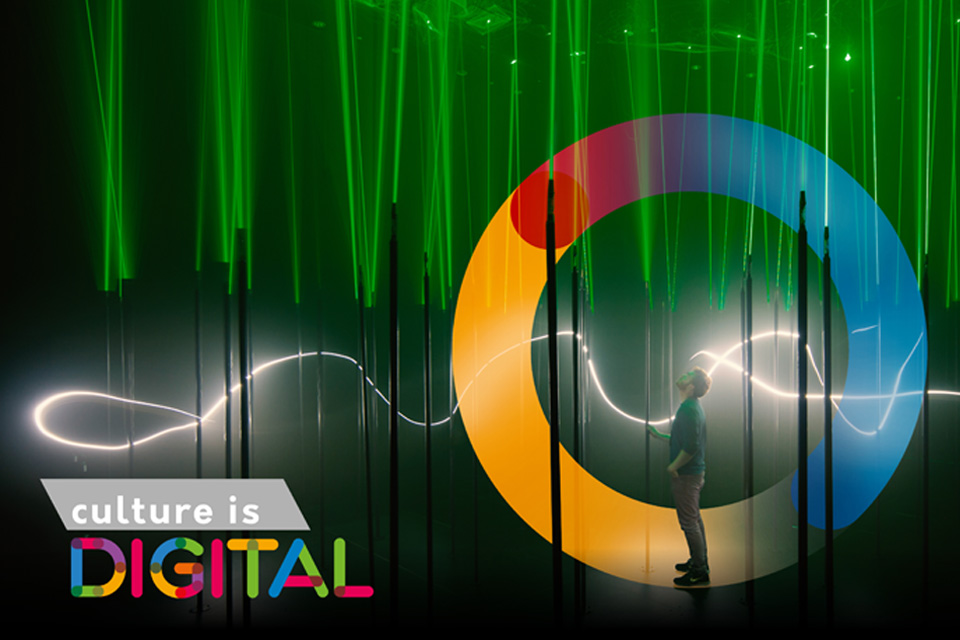
Image created by Marshmallow Laser Feast. Photo credit - Sandra Ciampone
1. Foreword

Rt Hon. Matt Hancock, Secretary of State for Digital, Culture, Media and Sport
By the Secretary of State for Digital, Culture, Media and Sport Rt Hon. Matt Hancock
The UK’s future will be built at the nexus of our artistic and cultural creativity and our technical brilliance. The Centre for Economics and Business Research 2018 World Economic League Tables identify this particular blend of creativity and technology skills as the driving force behind the UK’s strong economic prospects over the long term; a powerful combination of talents to project to the world as we prepare to leave the EU.
Digital technology is breaking down the silos between the cultural sectors, blurring the lines between disciplines – theatre blends with film; computer programming merges with sculpture. We have virtual reality curatorship, animated artworks, video games scored by classical music composers.
1.1 Tech meets culture
Tech companies are collaborating with cultural organisations and practitioners to create new experiences for audiences, often exploring the boundaries of new technology at the same time. The Royal Shakespeare Company’s groundbreaking production of The Tempest brought digital avatars to life in real-time as part of a collaboration with Intel and Imaginarium. The partnership between English Heritage and Google Arts and Culture uses 360 degree image capture to reveal historical treasures online for the first time.

The Tempest, The Royal Shakespeare Company
1.2 Unprecedented opportunities
Technology offers unprecedented opportunities for the UK cultural sector. On a daily basis we witness technology’s role in engaging new audiences, nationally and internationally, through digital platforms and distribution channels; in driving business models; creating art, cultural content and experiences; and increasing access to our world-class archives and collections. The Associated Board of the Royal Schools of Music sets the standard for music examinations in 93 countries. Its international reach and continued success is dependent on the use of digital tools to communicate with teachers and learners across the world. National Theatre Live is opening up performances to cinemas and classrooms all over the world whilst the Forever Project at the National Holocaust Centre and Museum near Newark, Nottinghamshire preserves the testimonies of Holocaust survivors using laser image technology.
1.3 The ultimate power couple
The UK technology and cultural sectors make the ultimate power couple but more action is needed to make sure that they share the same interests. By focusing on the synergies between culture and technology - where the UK has dual competitive advantage - this Digital Culture Report focuses on the use of digital technology to drive our cultural sector’s global status and the engagement, diversity and well-being of audiences.
This report is the culmination of the Digital Culture Project which I launched in April 2017 with the #CultureisDigital online consultation. The enthusiastic response to #CultureisDigital animated this project’s consultation and policy making process. Our hashtag trended on twitter in week one, the online stakeholder discussion platform was viewed 39,000 times and the blogs on the project on our DCMS channels received thousands of views. As a result the stakeholder consultation attracted contributions from more than 150 organisations, from major national institutions to local arts charities, as well as large digital companies and tech start ups. Throughout the process, clear messages emerged about the opportunities and challenges and the demand from all parties for leadership, coordination and action. We heard that a number of cultural organisations feel held back by a lack of infrastructure or resources, that they need better digital skills and to focus more time on leadership training; there are often communication barriers when working in a cross disciplinary way, and the pace of change in technology itself has resulted in a fragmented approach.
1.4 Audience expectations
We also heard a plea for evolution rather than upheaval. My department has responsibility for all things digital. But not everything is high tech. Or needs to be. We still enjoy reading a book, looking at a painting and watching a play without a mobile phone or a VR headset. Great art and cultural experiences are being created and appreciated by audiences in traditional formats. But audience expectations are changing and so are the practices of artists, creators and curators and we must ensure that the right structures are in place to support this transformation so that the UK continues its long history of creative excellence - digital and analogue.
Cultural organisations have a powerful role to play for audiences - particularly younger audiences - in the digital age. In the echo chamber of social media where content and commentary can be chosen to confirm existing views, cultural organisations can provide challenge, interrogate our opinions, reveal our history and support our sense of community.

Our Dancing Shadows by Kaleider. Photo credit: Kaleider
Over the following pages I aim to set out a vision for Digital Culture. I hope it shines a light on the considerable successes of culture’s engagement with technology and sets out some practical actions to help tackle the barriers for organisations of all sizes; tech and cultural.
1.5 Tech and culture partnerships
Through this report I want to encourage tech companies - large and small - to think about partnerships with cultural organisations. To help provide creative thinking, to scrutinise tech development or to connect to new audiences. The policy commitments are an Action Plan for cultural and tech organisations but they also provide a framework for the coordination and development of future activity.
My enormous thanks go to the many individuals, organisations and advisors from across the cultural and tech sectors who have given freely of their experience, skills and ideas. I am particularly grateful to Jane Finnis, Will Saunders, Professor Simeon Yates, Tonya Nelson and Lucy Sollitt who were seconded to the Digital Culture Project over 9 months to develop policy ideas and whose work is reflected in this report. This project has been a team effort so far, and there is much more to do.
2. Executive Summary
The UK has a dual competitive advantage in creative and technological skills and our future prosperity will be driven by this particular combination of strengths. In March 2017, the Government set out an ambitious Digital Strategy, aimed at ensuring that the UK is the best place to start and grow a digital business and trial new technology, and that our digital sectors remain world-leading. This has been amplified by the Government’s Industrial Strategy, which set out how the UK will build on its strengths, extend them into the future and capitalise on the opportunities before us.
The UK is 5th in the global innovation index and an ‘innovation leader’ on the 2017 Euro Innovation Scoreboard. We are a tech savvy market, quick to take up and innovate with new technology; our capital’s tech firms raised a record £2.45 billion in 2017, and evidence shows that the UK and, in particular, London remain the most attractive destination in Europe for tech investors, gaining more venture capital investment in 2017 than Germany, France, Spain and Ireland combined. The Government’s Industrial Strategy aims to expand on these successes, providing greater resources that enable firms of all kinds to start-up, scale-up and grow. Through the Digital Charter, the Government will ensure the internet works for everyone, agreeing norms and rules for the online world and putting them into practice. Following the work of the Artificial Intelligence review, we will work to make the UK a global centre for AI and data innovation and embed the power of these technologies across our economy.
2.1 A fast-growing sector
Creative Industries; those sectors which have their origin in individual creativity, skills and talent and which have the potential for wealth and job creation through the generation and exploitation of intellectual property, sit within and alongside the digital sector. Sir Peter Bazalgette’s Independent Review of the Creative Industries highlights the significance of these sectors to the UK’s Industrial Strategy. The creative industries contributed over £90 billion in GVA in 2016, over 5% of the UK economy (comparable to the Construction or Information sectors) and, between 2010 and 2016, grew by 45% – faster than any other sector. Cultural organisations and practitioners are vital components in this success story, contributing just under a third (£26.8 billion) of the GVA generated by the Creative Industries.
2.2 A world-class cultural destination
The UK is one of the most exciting cultural destinations in the world; boasting world class museums, with the British Museum, the National Gallery and Tate Modern in the top ten most visited museums in the world. Experts in our archive institutions preserve a thousand years of iconic national documents and the 3,223 libraries on high streets and in communities across Great Britain provide a range of services to meet the needs of local people. We can celebrate our nation’s rich heritage with our historic buildings and monuments ranked 5th on the Nations Brand Index and we can boast of a cutting-edge performing arts sector with three of the world’s top five universities for the performing arts located in the UK. That training quality, in turn, feeds into our UK film industry which contributed £5.2 billion to UK GDP in 2015, due to the talent both in front of and behind the camera and the quality of production, with the top three films released at the UK box office in 2017 being UK qualifying productions.
The Digital Culture Project has been about bringing these success stories together. Born out of the Culture White Paper, the Digital Culture Project and the #CultureisDigital online consultation was launched in April 2017. Its aim has been to explore how culture and technology can work together to drive audience engagement, boost the capability of cultural organisations and unleash the creative potential of technology.

Laser Light Synth Brighton Digital Festival
2.3 Working across the UK
Although cultural policy itself is devolved to Scotland, Northern Ireland and Wales, this report covers the whole of the UK and seeks to highlight digital cultural activities across borders. There are common issues to be pursued as each of the devolved administrations recognise the significance of technological changes to cultural organisations and audiences, and we collectively aspire to extract the maximum benefit where proposals have UK wide reach. We have highlighted where actions are UK-wide or solely for England. Generally, only those actions being delivered by the Arts Council England alone, as its remit is restricted to England, are unavailable for cultural organisations in the devolved administrations to participate in and benefit from.
The devolved nations are active in this space. Creative Scotland’s 10 Year Plan 2014-2024 sets out an expectation that all organisations will build digital thinking into their work and ‘ensure that creative people and organisations have the digital skills and capacity to share and market their work’. The Welsh Government is committed to celebrating the unique culture and heritage of Wales (Prosperity for All) and to promoting digital access, developing the potential for digital media to promote culture through projects such as Casgliad y Werin (People’s Collection Wales).
2.4 Themes
The policy commitments in this report congregate around three key themes, each a chapter of this report. Below are introductions to each theme:
2.5 1. Audiences - using digital technology to engage audiences
Digital experiences are transforming how audiences engage with culture and are driving new forms of cultural participation and practice. As technology advances, so do the behaviours of audiences, especially younger audiences. We are no longer passive receivers of culture; increasingly we expect instant access to all forms of digital content, to interact and give rapid feedback. Audiences are creating, adapting, and manipulating, as well as appreciating art and culture. In an era where the UK has an online audience of 50.4m people, 76% of adults have a smartphone and 80% use the internet daily or almost daily, digital technology is transforming the relationship that cultural organisations have with the public.
Technology allows cultural experiences to be more accessible than ever; whether viewing collections online, experiencing immersive theatre or purchasing e-tickets for productions. We can look at a painting, read a novel, discover the heritage on our doorstep, or listen to music at a moment’s notice, on multiple platforms and wherever we are in the world. Cultural organisations are beginning to harness the potential of digital technology to engage audiences through new formats and mediums and by diversifying their distribution channels.
In using new technologies, there is the potential to reach out to new as well as existing audiences, including those who may have been previously disengaged or uninterested, and provide a hook for audiences to experience culture in new or ‘deeper’ ways. The collection, analysis and improved sharing of audience data is a key opportunity, allowing organisations to develop a more informed and responsive relationship with existing audiences and to engage new and under-represented audiences.
With audience statistics showing levels of under-representation from Black, minority ethnic and disabled people, and lower socio-economic groups for many of the cultural sectors this report emphasises how digital communications and data tools can support efforts around audience diversity in combination with the provision of cultural content and experiences.
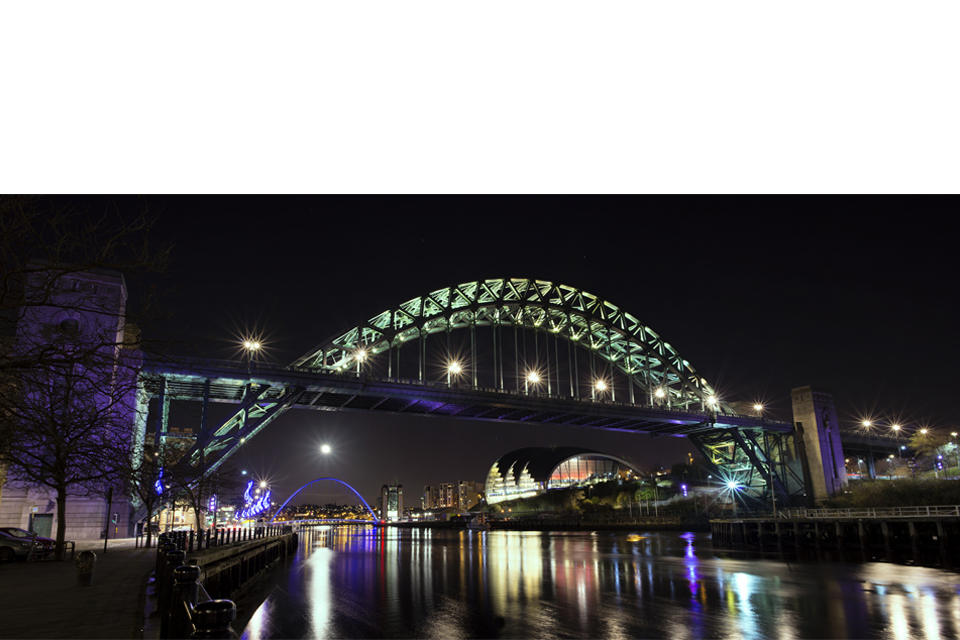
The Sage, a major venue of the Great Exhibition of the North
2.6 2. Skills and the digital capability of cultural organisations
Developing digital skills, for individuals, businesses, government and other organisations was at the forefront of the UK’s Digital Strategy and the UK’s Industrial Strategy. These set out Government ambitions to ensure that we have the skilled and capable workforce necessary for an increasingly digital world.
Cultural organisations are increasingly using technology to help them deliver across many areas of their business. Research shows that organisations who benefit most from digital technology are those who are digitally mature. Digital Maturity is where digital activity is embedded across an organisation as part of the strategic vision and throughout every part of the business, from its creative output and audience outreach through to e-commerce.
The cultural sector has particular skills gaps around intellectual property and data analysis. Organisations don’t have the skills relating to rights clearance, or access to legal advice around intellectual property rights. This lack of expertise is limiting their ability to create and exploit digital content. A lack of skills in data analysis is preventing cultural organisations from collecting data and using it to develop their business models.
Our consultation also found that digital leadership - from both trustees and executive leaders - within the cultural sector has a significant influence on organisational behaviours. Change happens when there is senior recognition of the importance of digital skills and the transformational role that technology can play to support creative, audience and business model development.
2.7 3. Future Strategy: Unleashing the creative potential of technology
The UK cultural offer is key to our soft power, as well as an important source of exports and inward investment. The UK is recognised as one of the world’s most adept soft power nations, ranked second on the Soft Power Index, a ranking for which our strong culture and digital sectors are important contributors.
Culture is a key driver for the Tourism sector. The 377,000 listed buildings, almost 20,000 scheduled monuments and 31 world heritage sites are cited as important motivators for visitors to the UK and DCMS-sponsored museums inspired 22 million overseas visits in 2016/17. We export cultural exports of £18 billion which are growing quickly and the cultural sector is a significant contributor to the GREAT Britain Campaign with events such as the Music is GREAT: British Music Showcase at MIDEM in June 2017, helping the GREAT campaign deliver economic returns of £2.7 billion for the UK already.
2.8 Priorities
The Digital Culture Project has highlighted three policy priorities to drive a Digital Culture Future Strategy and exploit international opportunities:
A. Digital Infrastructure for Culture
Our museum and archive collections are the envy of the world; 2,600 English museums care for important domestic and international collections, both historic and contemporary, and their curation is world renowned and respected. Our cultural institutions have responsibility for the curation, protection and preservation of the material they look after, for both present and future generations.
The Culture White Paper set out the aspiration to make the UK one of the world’s leading countries for digitised public collections. Digitisation has already had a significant impact on access to collections; 61% of museums have digitised up to 50% of their collection, with half of those with a digitised collection having made some of it available online. The National Archives have digitised and published online over 80 million of their historical documents, which in 2015-16 received more than 17 million visits.
A number of projects already in development are aimed at joining up collections, such as the British Library-led project for a Single Digital Libraries Presence; The Heritage Gateway; The National Archives Discovery Project; ArtUK, and the British Film Institute’s Unlocking Film Heritage Programme. However, throughout this project there have been calls for a more strategic and coordinated approach to enable more connections and curated content to be available across multiple digitised collections, across sectors and to improve discoverability for audiences. This change would meet the expectations of audiences, scholars and the museums and archives workforce who expect digital content to be easy to navigate and open for them to enjoy, contribute to, participate in and share.
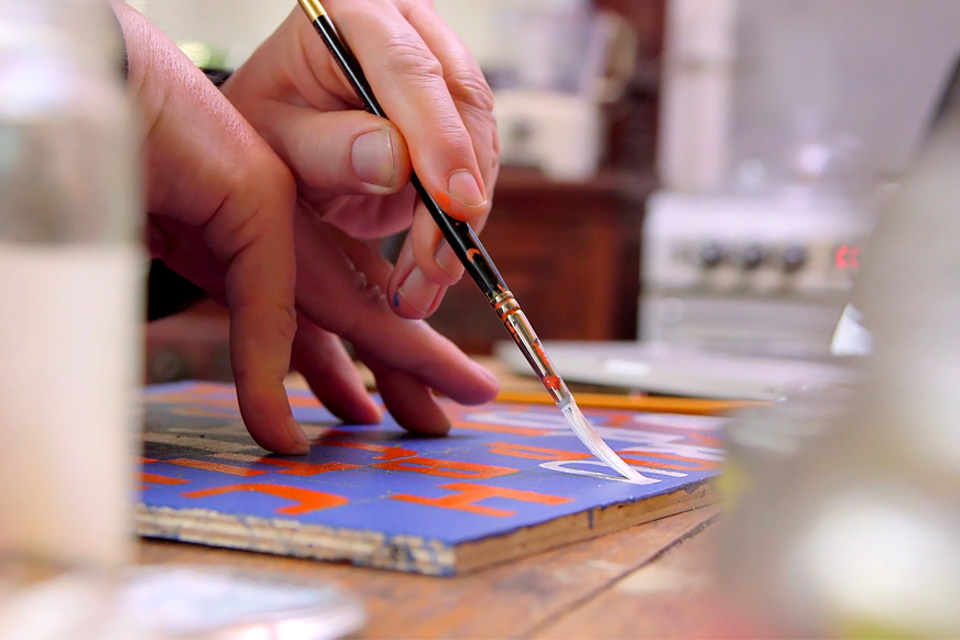
Art UK contains over 200,000 digitised art works
B. Innovation
The fast rate of growth in the creative industries is largely driven by a combination of creative risk taking and Research and Development (R&D). The UK has a world beating HEI sector for creative subjects with institutions like Glasgow School of Art, University of the Arts London and Goldsmith University’s. Students graduate with fully converged creative and digital skills and expect to pursue their creative practice using new technology.
The UK is at the cutting edge of innovation and technology globally, attracting more overseas investment in R&D than Germany, France and China. However, our research found that the cultural sector, like the wider creative industries, finds it difficult to access R&D funding, resulting in less experimentation, access to technical skills and expertise, research, hardware and software, as well as time and space to undertake R&D. The Bazalgette Review of Creative Industries notes that smaller organisations lack the capacity for strategic, cross-sectoral R&D which, if properly recognised and supported, could propel growth within the sector.
The immersive reality market is growing at a fast pace, and is expected to reach £100 billion worldwide by 2020, with the UK share currently estimated to be 5%. Cultural pioneers such as the Royal Opera House and the Philharmonia Orchestra are showcasing British excellence in immersive cultural production and demonstrate the potential for cultural organisations to play an influential role in positioning the UK as a global leader in content creation for immersive technology. International touring projects like the collaboration between Marshmallow Laser Feast and Abandon Normal Devices in the award winning show In the Eyes of the Animal - a sensory perspective of three species of animals which inhabit British forests - and Rain Room by Random International - an installation in which rain falls all around the visitor but its touch remains absent due to 3D tracking devices - demonstrate the export potential of immersive cultural experiences.
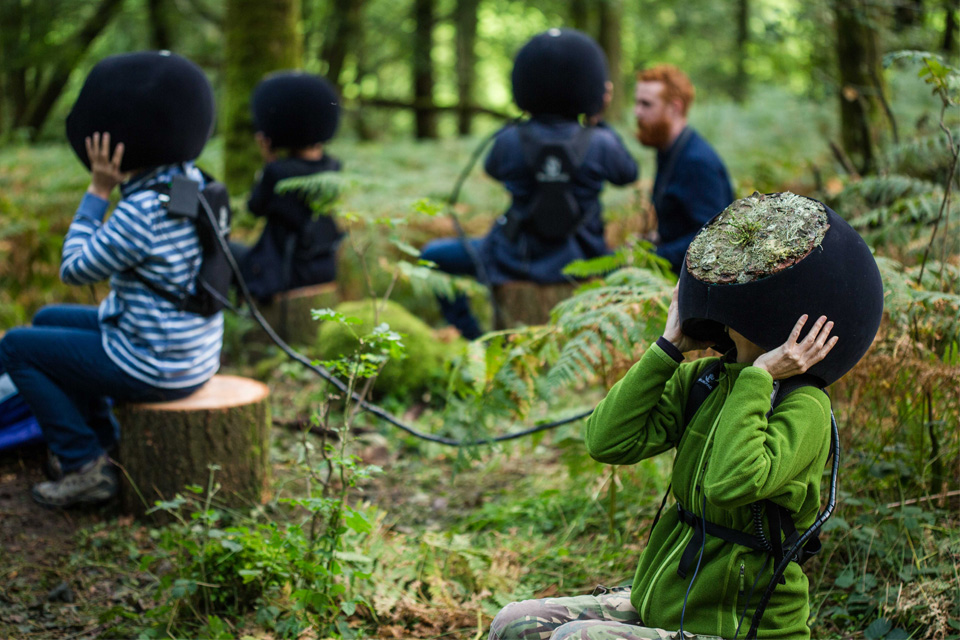
In the Eyes of the Animal, Abandon Normal Devices AND Festival 2015. Photo by Luca Marziale
By testing pioneering new experimental ideas and experiences using emerging technologies, culture can provide fuel for the wider creative economy.
C. Collaboration and Partnerships
Highlighted in the Culture White Paper, cultural organisations have a strong history of collaboration and successful partnership working and for many UK cultural organisations, multiple partnerships are a way of life. Effective tech sector partnerships can give cultural organisations access to digital talent, space, data, equipment, funding, peer to peer learning opportunities, and experimentation with technologies and new ways of working. In turn, the tech sector benefits from access to creative minds and creative content with which to innovate and a chance to reach out to new audiences to test the technology further than conventional consumer testing.
Content creation can also help to drive technical innovations, pushing the possibilities of the software and its experiential potential. We are already seeing some impressive collaborations and partnerships between the culture and tech sector. For instance, Watershed in Bristol is working with the University of Bristol and their industrial partners to prototype and showcase new public facing applications of 5G. Government wants to create the conditions where more partnerships between cultural and tech organisations of all sizes are possible.
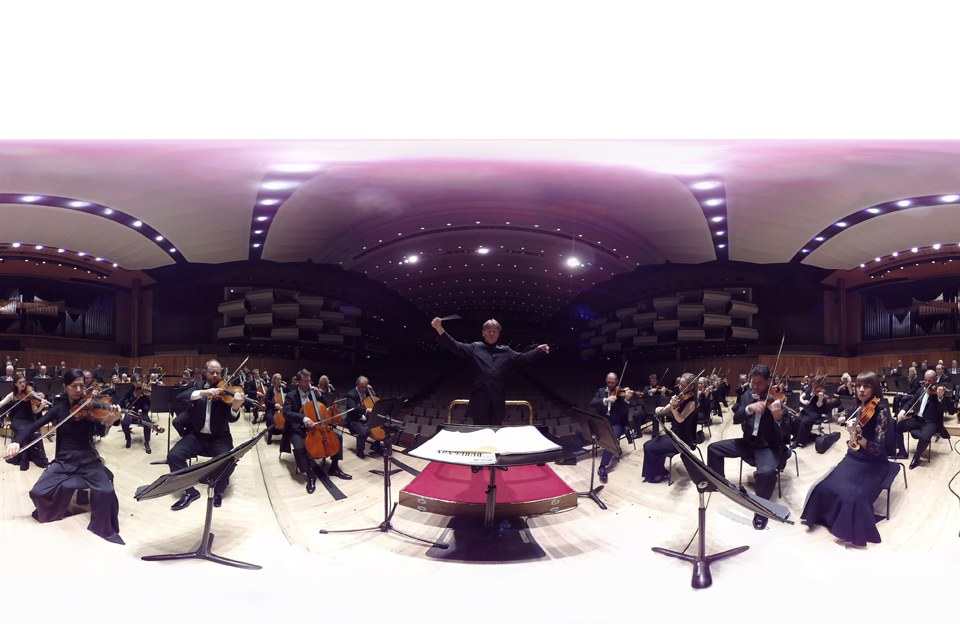
The Virtual Orchestra, produced by the Philharmonia Orchestra and presented in partnership with Southbank Centre
3. Summary of policy commitments
3.1 Audiences - using digital technology and tools to drive audience engagement
.1. Arts Council England and the Heritage Lottery Fund will ensure that funded organisations get better at collecting, using and sharing audience data, including:
- Collecting and understanding data on the reach and impact of their digital and nondigital work and using it to drive their audience engagement strategies ensuring it is done on a consistent basis across the arts and heritage sector;
- Encouraging the use of integrated databases, such as Audience Finder, and the sharing of audience insight research, so that all businesses in the sector can better understand digital and physical audiences
.2. The Space and The Audience Agency will work with arts and cultural organisations, Nesta, the BBC and other content publishers and partners to develop a metrics framework and best practice guidance for arts and cultural organisations to use when planning and assessing audience engagement across different digital platforms.
.3. In order to further broaden cultural engagement and empower communities to share their voices, views and creative content digitally, Arts Council England will ensure that its Creative People & Places programme makes use of digital communications and platforms and that the analysis and learning from the projects are widely shared.
.4. We will encourage recipients of UK City of Culture and Cultural Development Funding to include ambitions to enhance digital audience engagement in their local place-shaping and growth strategies.
3.2 Skills and the digital capability of cultural organisations
.5. Arts Council England, working with the Heritage Lottery Fund and partners, will create and pilot the use of a Digital Maturity Index for the cultural sector, to enable organisations to understand and benchmark their own digital capability and set plans in place to make improvements.
.6. Arts Council England, working with the Heritage Lottery Fund and partners, will work together to create a Digital Culture Code; a set of guidelines and principles which cultural organisations should sign up to in order to demonstrate a commitment to developing their own digital maturity and the maturity of the wider cultural sector.
.7. Arts Council England will set-up a Digital Culture Network, investing £1.1m over two years to create a network of expertise and sharing of best practice across each region in England in order to increase its sectors’ digital skills and capability. The Network will:
- Produce and deliver packages of support to increase the digital maturity of organisations and improve digital skills within organisations;
- Look to partner with technology organisations to deliver training regionally reflecting key regional trends and needs;
- Facilitate partnerships and collaboration between its funded organisations and the tech sector and others;
- Provide targeted support to leaders to increase the digital maturity of their organisations, including the creation of a digital board bank and guidance of digital criteria for senior leadership appointments.
.8. In order to build the digital capability of the sectors it supports, the Heritage Lottery Fund will:
- Fund a £1m campaign which will run over two years, to attract high-quality projects to build the sector’s digital capacity, starting in 19/20 with a grant budget of £500k p.a.;
- Make digital a key feature throughout the Heritage Lottery Fund’s Business Transformation programme, with a particular focus on upskilling staff.
.9. In order to support the cultural sector in its understanding of Intellectual Property:
- The Intellectual Property Office will work with the British Library’s Business & Intellectual Property Centres and representatives from the cultural sector to develop guidance and training so that cultural organisations can better understand the Intellectual Property framework and its relevance to them.
- The Space will lead work with cultural organisations, cultural rights holders and seek guidance from the Intellectual Property Office to develop a Cultural Digital Rights Code of Practice.
3.3 Future Strategy: Unleashing the creative potential of technology
.10. The National Archives will work with culture sector representatives to develop a new strategic approach to the digitisation and presentation of cultural objects, for example, looking at the common standards needed to make our nation’s great cultural assets more interoperable, discoverable and sustainable.
.11. The National Gallery and the Royal Opera House will open up new opportunities for the culture sector to experiment with new technology and cultural content:
- The National Gallery, working with data partners like Nesta, will create an Innovation Lab so that cultural organisations, and in particular museums, are able to make best use of advanced digital technologies in enhancing visitor experience and creating content, and can develop best practice in collaborating with the technology and academic sectors.
- The Royal Opera House will create an Audience Lab to work with diverse talent, developing new skill sets to create innovative content using emerging technologies. The Audience Lab will strive to develop cross-sector collaborations to open up new experiences for audiences.
.12. The Royal Shakespeare Company, the BBC and the Arts and Humanities Research Council will share selected Research & Development prototypes and technical assets and will offer related capacity building and innovation support to cultural partners of all sizes across the UK. This commitment is aimed at mitigating resource issues, reducing duplication and encouraging innovation through collaboration.
3.4 Conclusion
This report is the first of its kind and, as such, is a call to action to practitioners and organisations across the cultural and tech sectors. Here, we propose an approach to support the whole digital culture ecology: our audience is both the world-leading and the small, voluntary led organisations in communities; technology companies ranging from start-ups and scale-ups to large and multinational tech companies; those working at the cutting edge of technology development and those using more basic digital tools. We encourage cultural and tech sector organisations to support the proposals set out here and work together to unlock the opportunities for Digital Culture. There is more to be achieved and we hope that individuals and organisations will use the framework of this report to coordinate themselves and the expertise and enthusiasm that we have seen over the last year.
4. Audiences - using digital technology to engage audiences
4.1 Introduction
Digital technology is increasingly important in our daily lives; 78% of adults have a smartphone and 80% use the internet daily or almost daily. As our interactions with technology increase and technology itself continues to advance, audiences’ expectations and our work and leisure behaviours are changing; including the way we engage with culture.
The Culture White Paper outlined the Government’s commitment that “everyone should have the chance to experience culture, participate in it, create it, and see their lives transformed by it”. Engagement in arts and culture can bring joy, improve quality of life, boost self esteem, bring communities together, improve mental health, and help people to maintain levels of independence and curiosity. Our arts, heritage, libraries, museums and galleries, films and archives all have a vital role to play in enhancing people’s lives, regardless of their background or where they live.
Technology provides an opportunity to turn up the dial on audience engagement, enabling cultural organisations to engage more people and to reach out to new audiences. Technology can also allow for a more meaningful or deeper relationship with audiences, including more interactivity, with users able to curate their own experiences and generate their own content.
Case Study: Park explorer
The National Trust, in partnership with the Capability Brown Festival 2016, developed the Park Explorer, an innovative approach to help visitors access information about Petworth Park’s landscape heritage and make more of their visit.
Thanks to a network of Wi-Fi hotspots, discreetly placed in the Park and Grounds of Petworth House, visitors have access to free, safe and secure resources through any smart phone or tablet. Devices can be used to pick up animations, videos, digital reconstructions of former landscapes, and scenes that you can rub away to help visualise the past. Devices with NFC technology also support location-triggered content; for example visitors can listen to extracts of 18th century letters or recreate historic views. Content draws on three years of archaeological research at Petworth Park, working with over 100 volunteers. The project was supported by the National Lottery through the Heritage Lottery Fund.
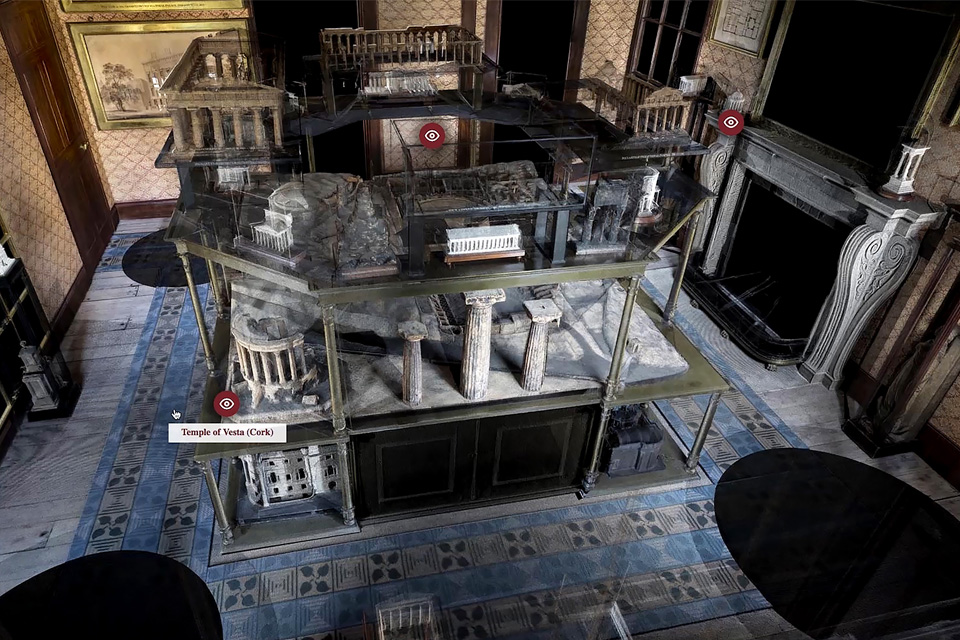
3D replica of Model Room, Sir John Soane’s Museum
4.2 Reaching more people
In March 2017, the UK’s online users numbered 50.4 million, with the average person spending 83 hours online during that month. The increase in use of smartphones, social media and on demand content means that cultural content can be more easily distributed amongst audiences through an environment where users interact daily, rather than audiences having to actively seek out content.
With digital content, cultural organisations are able to reach and engage more people than could ever have physical access to culture through visits, opening up our nation’s cultural offering to all rather than only those living within travelling distance. For instance, the Natural History Museum reaches more people in a single month through social platforms than visit the museum in person during a whole year. In 2016/7, National Theatre Live screened 30 productions internationally and sold 240,000 tickets for screenings in the US alone. Cinegi Arts&Film is trialing a digital distribution service that makes it easy to screen films or cultural content in venues such as pubs, libraries, museums and community centres throughout the UK, transforming it into a pop-up cinema for special events or regular screenings.
The power of digital communications was seen to great effect in the 330 million social media impressions made by Jeremy Deller’s We’re Here Because We’re Here. This modern memorial to the opening day of the Battle of the Somme saw 1,400 volunteers dressed as First World War soldiers appearing unexpectedly throughout the UK on 1st July 2016. Commissioned by 14-18 NOW, the digital reach of this project ensured 63% of the UK population became aware of it.
Case Study: How digital has increased public libraries’ reach
Public libraries have enhanced the provision of digital access to culture, by making digital resources available online and in libraries, and through loans of e-books, e-magazines and e-audiobooks. These can be downloaded onto personal devices allowing people who might not otherwise engage with libraries and books (such as those who can’t easily visit a library), access to a wide range of material and connect with their communities. This provision has grown rapidly in recent years with nearly all local authorities now providing e-lending to library users. There were 5.47 million annual issues of e-books by public library services in England in 2016/17 compared with 3.19 million annual issues of both e-books and e-magazines in 2015/16. Some local authorities are innovating further and developing these digital library services to address social isolation and foster community engagement. For instance, projects in Lewisham, West Sussex and Hampshire are piloting loans of devices like tablets to older people and the disadvantaged, providing access to digital reading and other cultural opportunities that might not otherwise have been available.
4.3 Reaching new audiences
The Culture White Paper set out the Government’s expectation that cultural organisations in receipt of public money should reach out to everyone regardless of background, education or geography.
Cultural engagement data shows fluctuations since 2005/6 when audience data was first collected by Government, but varying by sector. For adults, data shows rises over that period in engagement at museums (up 10 percentage points), Heritage (up 4 percentage points) and the Arts (up 1 percentage point) whilst libraries has seen a significant fall (down 14 percentage points).
Although there have been some notable improvements there remain gaps with black and minority ethnic and disabled people consistently under-represented in arts, heritage and museum engagement. The Arts Council England’s report into diversity covering 2016/2017 also finds engagement is skewed towards those in higher socioeconomic groups. The report finds that whilst 31% of the population are in the lowest DE socioeconomic groups, these groups represent 22% of ticketed and 24% of non-ticketed events for their partner organisations. For libraries, however, black and ethnic minority use is more than 13 percentage points above the use by those of white ethnicity, and there is no longer a significant difference in public library use between those with or without a disability/long-standing illness. Libraries also have the highest relative use by women, with a gap of 9 percentage points over male use.
Digital engagement
Digital communication and content are tools which can help deliver greater levels of cultural engagement. Younger audiences, in particular, provide an opportunity for cultural organisations to increase engagement given their high levels of technological sophistication and digital consumption. 99% of 12-15 year olds go online, averaging 21 hours of online time per week, whilst 77% play computer games, at an average of 12 hours per week.
Case Study: Younger audiences: Playcraft: the world’s first live play in Minecraft
In 2017, The Space commissioned Derry Playhouse to produce Playcraft, the world’s first play designed, developed and performed in Minecraft and simultaneously on the stage. The Playhouse team were particularly keen to engage with younger audiences - 9-12 year olds are the prime users of Minecraft.
The Space introduced the team at Derry to Alex Scarrow, author of the TimeRiders series for young adults. Alex was commissioned to write a new play that existed within the pre-established world he had created in the novels. Scarrow’s time-travelling plot leant itself to a mixture of performances live on stage and in Minecraft, with the actors performing onstage some of the time, and then moving into Minecraft.
On the night of the live broadcast in Minecraft and on YouTube, the 200 audience members in the theatre in Derry were joined by hundreds of thousands of people from across the world watching the production. As of the end of November 2017 the views of the play across all platforms exceeded 430,000, with views of all accompanying artwork content over 700,000, and this is growing over time. The recording of the live stream is available on YouTube

Playcraft - Derry Playhouse Theatre/Hypixel/Blockworks/Adam Clarke/Alex Scarrow/The Space/Dragnoz
No silver bullet
However, simply making digital content available does not mean that audiences will automatically engage.
Our expert advisor on research and evidence, Professor Simeon Yates, found a strong association between cultural exclusion (visiting a cultural venue) and digital exclusion (being online). Whilst some parts of the population are being ‘double served’ by physical and digital cultural offerings, others remain on the outside. This means that, at least for some, technology is not a way to drive cultural engagement.
OFCOM’s Adult Media Literacy Tracker shows that 12% of the adult population do not go online and among those that do go online, 28% are ‘narrow users’ of the internet, using the internet for a small number of activities. These behaviours are particularly prevalent amongst the over 75s, of whom 56% do not go online and, among those that do go online, 51% are narrow users of the internet.
Alternatively, some people simply prefer to engage with culture as a live experience and a visit to a museum, heritage site, library or theatre is an opportunity to step away from digital activity for a few hours.
These levels of digital consumption are not a static picture. Whilst certain groups and individuals are currently beyond digital reach, these behaviours change rapidly. For example, the proportion of internet users aged over 75 with a social media profile or account, doubled between 2015 and 2016 from 19% to 41% whilst 39% of those aged 65-74 reported using a smartphone in 2016, up 11 percentage points from 2015.
Marriage of digital communications and content
Feedback from our consultation has been clear that to increase participation from under-represented audiences, content and digital communications strategies must work hand in hand. Cultural organisations should consider the engagement patterns of potential audiences rather than presuming digital communications and content will automatically reach a wider audience. The most effective audience engagement brings together digital communications with content or experiences which are compelling to a particular audience or community.
Case Study: Made in Corby: Reaching new audiences
Corby is an area of low engagement in the arts and ‘Made in Corby’s’ aim is to inspire more local Corby people to take the lead in experiencing, creating and taking part in high quality arts and cultural activities. Over the first three years, it provided 579 separate opportunities for local people to enjoy the arts.
Over the next three years, ‘Made in Corby’ are launching a new annual outdoor arts festival aimed particularly at engaging the ‘Facebook Families’ audience who are least likely to participate in arts activities but have high levels of engagement with social media. For the first festival, this will include an augmented reality app, with families able to hunt the festival’s mascot in places around the town and the mascot revealing teasers of festival events. The app will also enable the digital creation of installations that are financially unachievable for the festival to deliver - for example a waterfall installation cascading down the town’s civic centre.
Made in Corby has been successful in engaging new audiences. For events taking place in Q2 2016/17, it was reported an average of 47% of visitors had participated in the arts in the last 12 months; suggesting that up to 53% were new to the arts. Made in Corby is part of the Creative People and Places programme, initiated and funded by Arts Council England through the National Lottery.
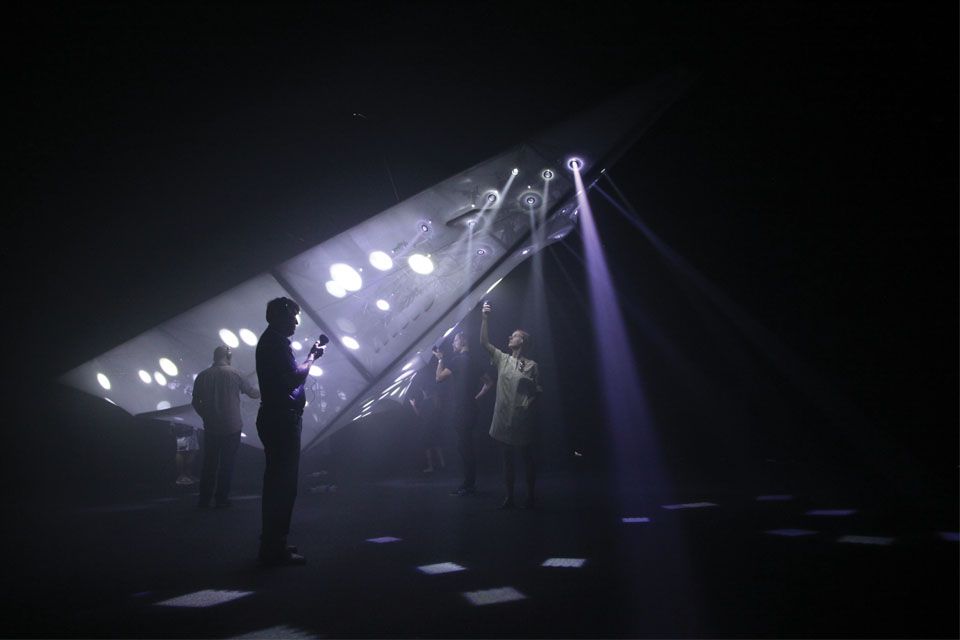
Imperial War Museum, Duxford
Cultural Education
One particular area in which cultural organisations have the potential to add value for young people is through their digital cultural educational offer. The Culture White Paper noted the positive benefits that cultural education and interactions have on young people, including increasing the likelihood of a young person going on to further and higher education and how ‘experiencing and understanding culture’ is integral to education.
The Arts Council England’s National Portfolio Organisations working with children and young people, are asked to outline their plans to use digital technology to capture and create content for children and young people as well as offering young people opportunities to create their own content. Each of Arts Council England’s ten Bridge Organisations (organisations funded to connect the cultural and education sectors) supports cultural organisations to deliver digital work for and by young people by providing training and networking events. Digital activity for children, young people and their teachers ranges from online and face to face Continuing Professional Development programmes for teachers delivered by organisations including the Hepworth Wakefield, Design Museum and V&A Museum, to comprehensive free resources available to download from the British Museum and the National Theatre of Wales’ online network ‘TEAM’ for 16+ creatives.
Examples of work in this area include Birmingham Open Media offering a cutting edge technology programme in which children and young people make their own work in response to gallery content. Culture24 helps museums to create online learning content for children and young people. Technology is being used by cultural organisations to address particular barriers, such as the use of Soundbeam, Skoogs and iPads in Special Educational Needs music education settings. Connect: Resound is a digital music education project bringing together music teachers, orchestras and music ensembles with children from schools in rural areas across England to transform access to music education. Following a successful pilot the North Yorkshire music education hub NYMAZ has rolled the programme out in rural locations elsewhere in England.
In 2015/16 Arts Council England partnered with TES Global, British Museum, Victoria & Albert museum and Royal Shakespeare Company on the ‘Huge History Lesson’ to deliver cultural education teaching resources online. Into Film is a charity working UK-wide and funded principally by the National Lottery via the British Film Institute (BFI). The Into Film programme promotes watching, making and understanding film for 5-19 year olds, focusing on film clubs as well as curriculum-based activity, training for teachers and club leaders, and links to cinemas and the film industry.

School pupils use tech to enhance their field trip
Understanding audiences
The collection and analysis of data provides an opportunity to learn more about the likes, dislikes, viewing habits and behaviours of different audiences.
Free national online tools such as the Audience Agency’s Audience Finder enable cultural organisations to understand, compare and apply audience insight so that they can create with audiences in mind. Audience Finder brings together data on all UK households with data from over 800 cultural organisations: over 170 million tickets, 59 million transactions, approximately 280,000 surveys and web analytics from all the UK’s major arts and cultural organisations as of January 2018. However, these databases are only as good as the evidence base supplied to them, needing data from many and varied sources to give real insights to content creators and organisations.
Arts and cultural organisations could also benefit from greater consistency and depth of understanding when interpreting digital audience data.
Case Study: The Marlowe Theatre: Translating Insight into Revenue and Engagement
The Marlowe Theatre in Canterbury used Audience Finder along with the embedded Audience Spectrum profiling system to understand and predict the behaviour of their highest-paying customers – at the Marlowe and elsewhere in their local area. Using these insights, they launched a successful campaign to attract new audiences identified by Audience Finder as having a similar profile to their existing high-paying patrons. Most importantly, they were also able to use Audience Finder to pinpoint a small but distinctive new audience in their catchment area who would be willing to support new work that is vital for The Marlowe’s reputation and positioning. Over the course of a year, they have increased their reach in this market by an impressive 50%.
Like many others The Marlowe has to balance its social objectives with financial challenges. Beyond their ability to increase targeted revenues through newfound insights, they are also able to use Audience Finder to identify and prioritise new and low-engaged audiences who can benefit from their discounts and outreach work.
Policy commitments:
.1.Arts Council England and the Heritage Lottery Fund will ensure that funded organisations get better at collecting, using and sharing audience data, including:
- a: collecting and understanding data on the reach and impact of their digital and non digital work and using it to drive their audience engagement strategies ensuring it is done on a consistent basis across the arts and heritage sector;
- b: encouraging the use of integrated databases, such as Audience Finder, and the sharing of audience insight research, so that all businesses in the sector can better understand digital and physical audiences.
.2. The Space and The Audience Agency will work with arts and cultural organisations, Nesta, the BBC and other content publishers and partners to develop a metrics framework and best practice guidance for arts and cultural organisations to use when planning and assessing audience engagement across different digital platforms.
The role of place
The Industrial Strategy introduced key policies to support prosperous communities throughout the UK and creating thriving communities through culture is central to the power of place. The Culture White Paper outlined how our cultural sectors already make a crucial contribution to the regeneration, health and wellbeing of our regions, cities, towns and villages. They also play a vital role in the UK’s creative clusters. Digital communications enable new engagement with audiences locally, focusing on what people care about in their local areas.
Hull, UK City of Culture in 2017 has shown the impact that cultural investment can have. Government funding for Hull of £15 million unlocked £3.3 billion worth of investment in the City since winning the nomination in 2013. Analysis shows that changes in the perception of the City is attributed as a key factor in securing that investment. Hull’s culture- led regeneration plan has created 7000+ jobs.
A £2 million Cultural Development Fund was announced in the Autumn 2017 Budget to support the role that culture and the creative industries can play to boost local economic growth. The creative use of digital technology, communications and tools to engage audiences will be an important part of developing and implementing place based strategies.
Art Council England’s Creative People and Places (CPP) project has focused on locally-led arts projects in areas of low cultural engagement since 2013, creating content with significance to each local community and giving communities a voice. The CPP programme has shown that locally driven and locally relevant work can engage those who wouldn’t ordinarily access culture. In the first three years of the CPP project 91% of audiences belonged to one of the medium or lower engaged audience groups, with around three quarters living in the project area of the event they attended. Digital tools and technology potentially have a great role to play in further increasing this engagement.
Case Study: Creative Scene, the Creative People and Places project in West Yorkshire.
This project has embraced digital as a way of creating new content that engages audiences and brings new audiences to outdoor arts events, in an area where there are few galleries, theatres or public venues. As well as commissioning new digital content, the project also presents the work in the public realm, often using digital as part of an immersive mix of outdoor digital image projections, beautiful and captivating lighting and illuminations, outdoor theatre and interactive artworks.
The commissions celebrate, interpret and reflect the local history, heritage and culture - and add some ‘wow’ to the mix - showing the area in a new light.
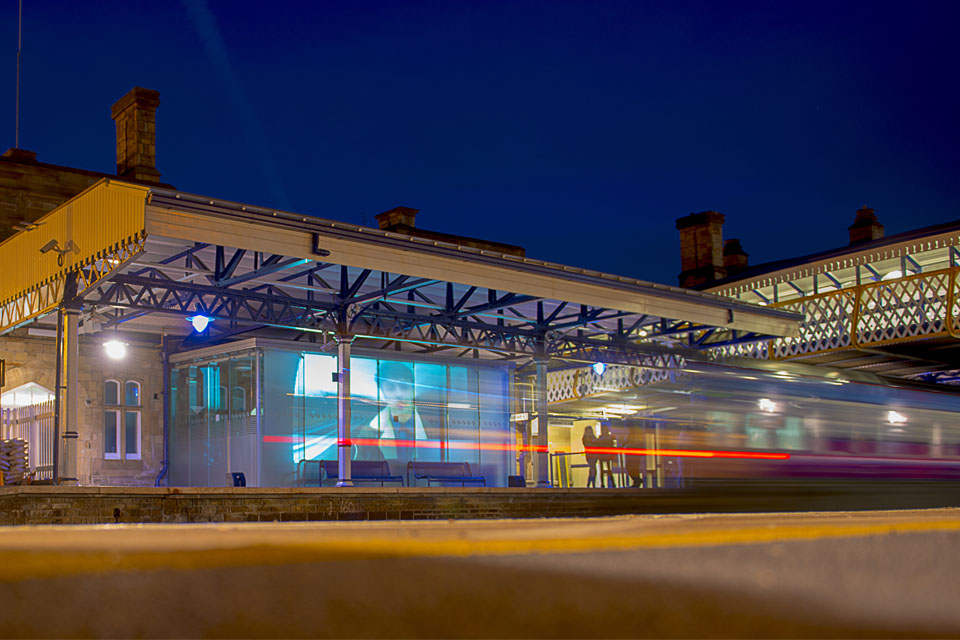
Ticket to Ride by ADEPT, produced by Creative Scene, an Arts Council England Creative People and Places project. Photograph by Charlotte Graham
Policy commitments:
.3. In order to further broaden cultural engagement and empower communities to share their voices, view and creative content digitally, Arts Council England (ACE) will ensure that its Creative People & Places programme makes use of digital communications and platforms and that any learning that emerges is shared.
.4. We will encourage recipients of UK City of Culture and Cultural Development Funding to include ambitions to enhance digital audience engagement in their local place-shaping and growth strategies.
4.4 New cultural experiences
Technology is having a profound effect on cultural activity, especially for younger generations. Audiences are no longer simply passive receivers of cultural content. They are selecting on-demand content, controlling interactive experiences, instantly sharing and distributing content and co-creating artwork itself.
User generated content
User generated content and crowdsourcing projects are driving new and closer relationships with audiences. For instance, Historic England’s Enrich the List project encourages members of the public to contribute information and images of England’s historic buildings and places and has seen 400,000 contributions added to the list. In Sleep No More, a Punchdrunk collaboration with MIT Media Lab, the theatre audience moves freely through the epic story of Macbeth, creating their own journeys through the film noir world.
Mobilising audiences
Audience interactivity has been powerfully mobilised with thousands of organisations and communities across the UK marking the Centenary of the First World War through local and national projects, many funded from the Heritage Lottery Fund. Young people are actively involved in shaping this activity and digital technology plays a key role in communicating research, telling stories and securing the legacy of the Centenary for the next generation. In We are #Youngwummin’ YouthLink Scotland, youth groups and the National Library of Scotland, invite young women to contribute to telling the story of the incredible Scottish women who helped win the war. Central Youth Theatre’s powerful pieces After Dawn’ and ‘Goodnight My Boys’ based on true stories of West Midlands’ soldiers shot for offences such as desertion or perceived cowardice, are freely available on You Tube. 1st Menai Bridge Scout Group on Anglesey are exploring the role of Snowdonia and Anglesey Scouts and Scouting during the First World War and ensuring their research is easily accessible after the project ends.
Meanwhile in Northern Ireland, led by The Nerve Centre, Reimagine, Remake, Replay will see over 4,000 young people take part in activities including making and curating their own exhibitions, writing, casting and directing their own films, and creating apps and games.
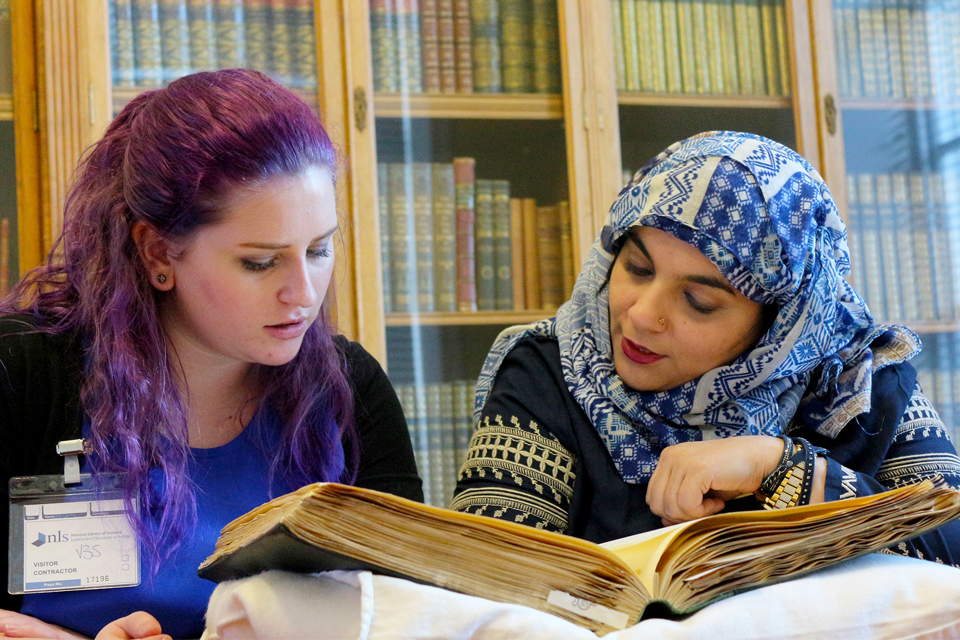
Scotswummin youth workers Fozzia and Rebecca research Scottish women’s history at the National Library of Scotland. © YouthLink Scotland
Case Study - New cultural experience - On-line Quilting
Wales-based artists Joanna Wright and Lenka Clayton have created a ‘live’ touring social quilting project online (Two itinerant quilters). They have taken inspiration from the 18th century travelling quilters who would stay with families in order to create patchwork quilts from old clothing, rags and sacks found at each home, and involves the artists asking members of the public to donate a small patch of their clothing to contribute to a growing quilt. As well as donating a piece of fabric, each participant contributes a story, remark or comment linked to the clothing, so the collection of stories grows as the physical quilt expands. In return, the artists sew a piece of contrasting fabric into participants’ clothing, to replace the piece which has been donated.
The aim of the work, funded by The Space, is to connect people, sharing the images and stories online to build a virtual quilt of colour, texture and personal narratives over time, alongside the physical quilt. So far, more than 300 people have contributed pieces of clothing to the work, 1,800 people have engaged with the virtual quilt online and over 7,500 Instagram followers have viewed posts regarding the quilt stories. View the gallery online and on Instagram .
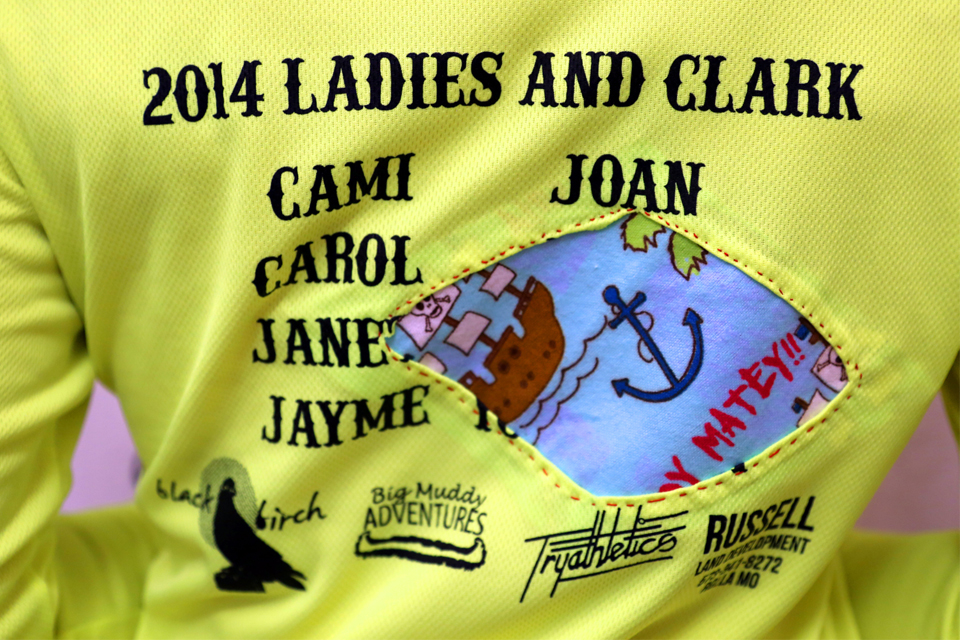
Patched jacket, Two Itinerant Quilters
Technology and creators
Technological advances also offer creators new ways of producing content and cultural experiences for audiences. Super high resolution imagery allows viewers to zoom in to focus on every brush stroke, virtual tours allow access to stately homes and monuments which are inaccessible to the public for conservation reasons, and immersive reality dance performances allow audiences to enjoy new experiences; stripping away time, stereotypes and even gravity. CGI technology brings Sir Richard Arkwright to life in the Arkwright Experience at Cromford Mills in Derbyshire, enabling audiences to hear first hand about the inventions, money and espionage intrigues from his life. Historical Houses Association lets users discover special houses and places by drone, giving a novel view of these prize assets.
Tackling access inequalities
The Taking Part 2016/17 survey shows that although engagement in culture from those with long term illness or disability has increased since 2005, there is still a notable participation gap. Support is available to help. For example, UK charity VocalEyes provides excellent guidance to cultural organisations on how they can ensure that websites, as well as physical premises, are fully accessible to d/Deaf and disabled audiences.

Arkwright Experience, Cromford Mills, Derbyshire
Digital technology tools can also help close this gap and greatly enhance the experience of those with disabilities. Hi-tech glasses like those being developed by the National Theatre allow d/Deaf audience members to watch performances with subtitles without having to rely on dialogue screens at the side of the auditorium. Mobile apps are unlocking cultural content for many users, and apps such as Signly are delivering smart signed content directly to a user’s device. We would encourage cultural organisations to test and use these new technologies.
Case Study: Signly App and The Roald Dahl Museum and Story Centre
The app, developed in collaboration with The Roald Dahl Museum and Story Centre, can be pointed at labels throughout the Museum to display British Sign Language videos enabling visitors to access information about the exhibits without having to wait for interpreted tours or make a ‘special need’ known.

Open Access Smart Capture Glasses, National Theatre, © Cameron Slater
5. Skills and the capability of cultural organisations
5.1 Introduction
A key aim of the Government’s Digital Strategy and Industrial Strategy is to improve the digital skills of UK businesses and citizens in order to make the UK a world-leading digital economy - one in which our cultural sector can play its part.
It is predicted that, within 20 years, 90% of all jobs will require some element of digital skills. The Government is committed to ensuring that everyone has access to the digital skills they need to thrive in the digital age, increasing their earning power and giving better job opportunities. The Industrial Strategy sets out the Government’s commitment to helping people develop the skills needed for jobs of the future, including investing an additional £406 million in maths, digital and technical skills in England. At the start of this year the Department for Education announced the Government’s commitment to fully fund basic digital courses from 2020, mirroring the approach to maths and English. In the interim, the Government will continue to support the provision of basic digital skills training for adults in colleges and community learning centres across England through the Adult Education Budget and other programmes.
5.2 A need to improve digital skills
In the cultural sector, there is a need to focus on digital skills from basic skills through to the specialist digital skills to ensure no segment of our workforce is left behind. At the same time, digital tools offer opportunities to drive efficiencies in back office operations, increase commercial revenues and fundraising, and improve audience reach.
The Department for Digital, Culture, Media and Sport has recently undertaken and published a series of reviews and reports. All of these reviews highlighted a need for DCMS’s Arm’s-Length Bodies to improve the digital capability of their own organisation and, in their roles as funders and development agencies, to support cultural organisations to do the same. Building digital skills has been identified by the Arts Council England as a priority, with 37% of its sectors’ organisations saying that a lack of capability and knowledge was a major barrier to achieving their digital aspirations and Heritage Lottery Fund’s consultation on its future direction has a focus on digital capability so they can better understand the support needed by the organisations they fund to use digital technologies.
Respondents to our consultation highlighted that digital skills are a key area of weakness for many cultural organisations. A Lloyds study on small businesses and charities found that a lack of digital skills and fears linked to online security were key reasons for organisations holding back on their potential to do more online. The 2017 Digital Culture Survey reports that 70% of organisations reported a major positive impact from digital technology on their ability to deliver their mission but the majority of organisations view themselves as only having basic digital skills. The survey reports that digital skills gaps cover everything from digital production and commissioning, to rights clearance and data analysis (see Figure 1).
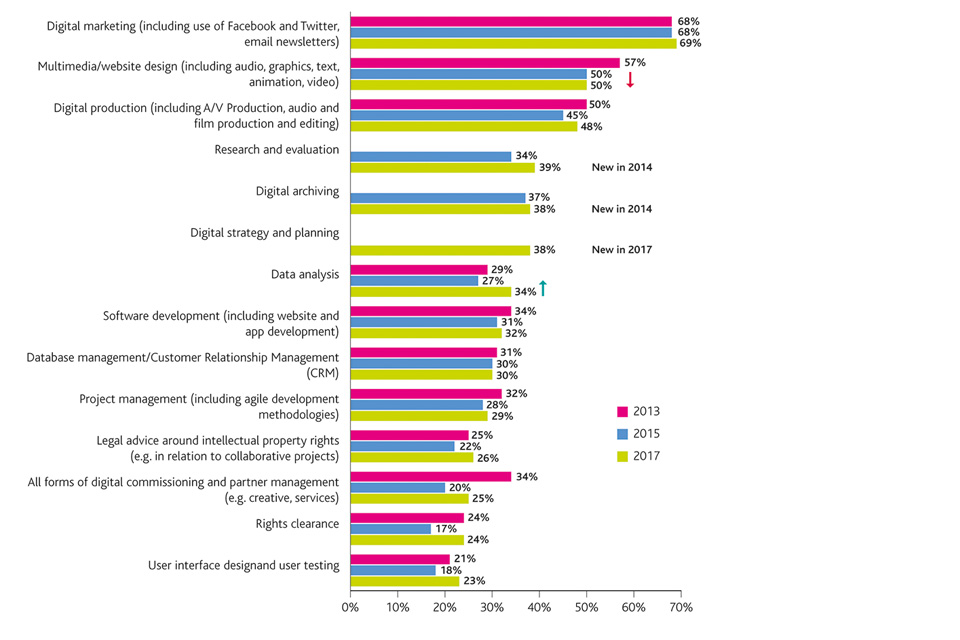
Note: Arrows denote statistically significant changes. Figure 1: Proportion of organisations that report they are well-served for Digital Skills, Arts Council England and Nesta Digital Culture Survey 2017
5.3 Digital Maturity
Research and our consultation has shown that organisations are more likely to experience benefits from digital technologies if they are digitally mature; where digital is embedded across an organisation throughout every part of the business, from admin and security, to e-commerce and asset management.
However, digital maturity will only occur if UK cultural sector leaders have the digital literacy and confidence to drive forward the adoption of digital technologies across their business plans. The Digital Culture Survey shows that only 38% of organisations felt that they are well served with the skills to create this sort of digital strategy.
A Digital Maturity Matrix allows organisations to make sustainable and continued incremental digital improvements to their businesses. The tool allows organisations to make an evidence-based case for digital transformation demonstrating the value in investing resources to do so. A number of tools to measure digital maturity have been developed and used across organisations in the UK and here we outline two of them.
Case Study: Breast Cancer Care: Digital Maturity Matrix
In 2015, Breast Cancer Care developed a digital maturity matrix tool as part of its digital strategy review but also wanted to ensure others could benefit from it so made it open source. The goal of the index was to quantify a previously subjective view on a charity’s digital progress. The tool assessed the charity’s existing digital capability across eight dimensions (everything from technology to governance), using a series of statements and allowed the organisation to set targets for the following year. Based on the digital maturity index, the organisation managed to raise their own digital maturity by 24% in just 12 months. Rights to the tool are now held by the NVCO, who have maintained it as an open source tool for the sector with over 800 charities now having used the index to increase their own maturity.
Case Study: Art Fund: Culture sector Digital Maturity Model
Art Fund underwent an extensive process to evaluate its own digital maturity using a model specifically adapted for cultural organisations, following research it commissioned to assess the digital maturity and needs of museums. By using the model to explore digital maturity, the process enabled Art Fund to understand the gaps that it faced as an organisation and the possibilities that working with digital technology can bring, while learning about the broader use of technology in different sectors. By fully engaging all of its employees to think about digital best practice, they have been able to embed new ideas and plans to capitalise on their digital future and better fulfil Art Fund’s mission. The use of a culture sector digital maturity model, assessing everything from technology to governance, would allow cultural organisations to clearly identify skills and knowledge gaps and be able to set appropriate areas for development to help address these gaps, with the benchmark and target of a digital maturity score. It will enable better understanding of where they need to invest and be able to put into place specific plans for improvement.
Policy commitment:
.5. Arts Council England, working with the Heritage Lottery Fund and partners, will create and pilot the use of a Digital Maturity Index for the cultural sector, to enable organisations to understand and benchmark their own digital capability and set plans in place to make improvements.
Alongside the Index will sit a Digital Culture Code. The code will set out some core principles supported by government and cultural funders to help organisations understand what is being asked of them when working with digital tools and technology. Principles might include a commitment to data sharing and designing audience engagement using data, support for building capacity across organisations (including big institutions supporting smaller ones and pooling resources across organisations) and a commitment to building digital maturity and the maturity of the wider cultural sector.
Policy commitment:
.6. Arts Council England, working with the Heritage Lottery Fund and partners, will work together to create a Digital Culture Code; a set of guidelines and principles which cultural organisations should sign up to in order demonstrate a commitment to developing their own digital maturity and the maturity of the wider cultural sector.
5.4 Building Capacity
Arts Council England
It is mandatory for Arts Council England’s National Portfolio Organisations (NPOs) receiving £250,000 per annum or more to have a digital policy and plan and Arts Council England has developed guidance and training to support NPOs in developing these policies and plans. However, Arts Council England intends to further support its sectors to develop its digital maturity at scale; in particular to make savings, transform business models and reach audiences.
The Arts Council England and Nesta Digital Culture survey highlighted regional variations in access to digital skills, and found that London has the highest number of ‘digital leaders’, with organisations outside London feeling less confident in their digital skills. It is therefore important that a regional approach is adopted.
The Arts Council England will invest in a Digital Culture Network to develop its sectors’ digital skills and capabilities. It will have a mission to increase the digital maturity of the organisations it supports, to embed digital skills, facilitate partnership and collaborative working, provide guidance and advice to senior leadership of its organisations on digital, sharing expertise and best practice. Since 2015 Google has been running the Digital Garage project which has helped 200,000 people in Britain learn crucial skills for the digital age. More recently Google have developed a coastal town tour of Google’s Digital Garage: a specific programme targeting hospitality and tourism industries in seaside communities. As part of the Digital Culture project, Google Arts and Culture will explore together with Arts Council England, if a similar specific project for the culture sector could be developed to help organisations improve their online presence, reach new audiences and create exciting digital experiences.
Policy commitment:
.7. Arts Council England will set-up a Digital Culture Network, investing £1.1m over two years to create a network of expertise and sharing of best practice across each region in England in order to increase its sectors’ digital skills and capability. The Network will:
- a. Produce and deliver packages of support to increase the digital maturity of organisations and improve digital skills within organisations;
- b. Look to partner with technology organisations to deliver training regionally reflecting key regional trends and needs;
- c. Facilitate partnerships and collaboration between arts and cultural organisations and the tech sector and others;
- d. Provide targeted support to leaders to increase the digital maturity of their organisations, including the creation of a digital board bank and guidance of digital criteria for senior leadership appointments.
Heritage Lottery Fund
Almost every project supported by the Heritage Lottery Fund produces digital outputs ranging from simple web sites presenting archival images, sound or film, to the innovative 3D experience of the Battle of Bannockburn and apps to help people identify species at risk. HLF recognises there is more it can do to support the use of digital technology to conserve and open up heritage.
The Tailored Review of the Heritage Lottery Fund and National Heritage Memorial Fund included a recommendation on digital capability and highlighted that HLF should work strategically to support, heritage projects that use digital, and to build the digital skills of organisations working in the heritage sector and those with heritage assets. The Digital Culture survey 2017 found that the ‘Heritage bodies’ which responded (the majority of which are Museums), are falling behind the wider cultural sector in their use of digital technology).
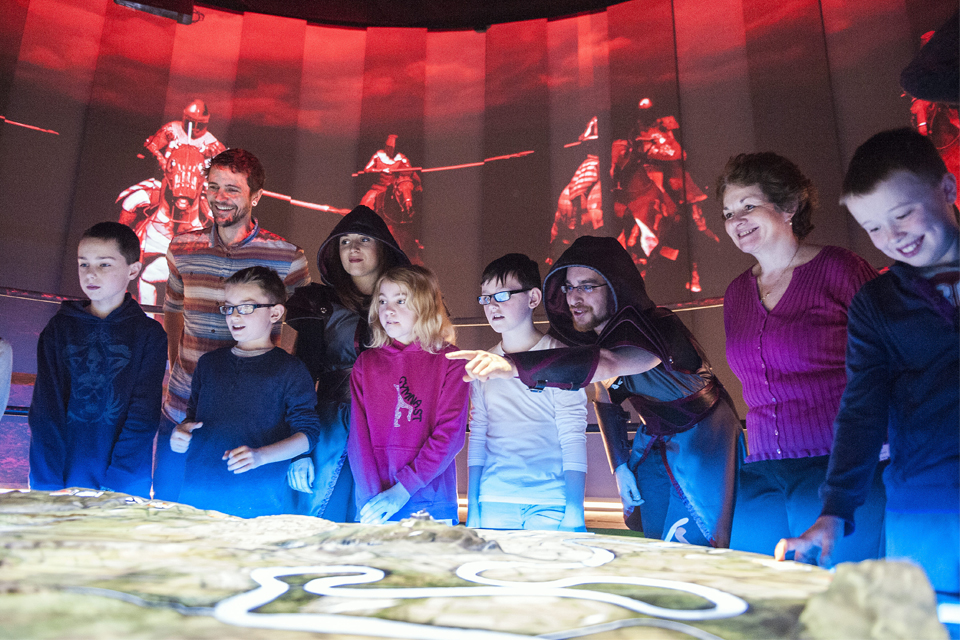
Battle Master leads a group of school pupils through a simulated battle in the Battle Room, Battle of Bannockburn Centre
In order to support the Heritage sector to build digital capacity, the Heritage Lottery Fund will create a £1 million two year campaign, focused on attracting high quality digital skills projects, starting in 2019/20. HLF will first seek to understand more about how it can support the sector through its Strategic Funding Framework consultation, the results of which will inform its ambitions for this campaign.
The Heritage Lottery Fund is also committed to ensuring that digital capability is a significant feature in the organisation’s own Business Transformation programme. As part of this commitment, they will appoint a Digital Trustee to its Board and appoint a new senior post to lead work internally and in its grant-making in the 2018-19 financial year.
Policy commitment
.8. In order to build the digital capability of the sectors it supports, the Heritage Lottery Fund will:
- a. Fund a £1m campaign which will run over two years, to attract high-quality projects to build the sector’s digital capacity, starting in 19/20 with a grant budget of £500k p.a.
- b. Make digital a key feature throughout the Heritage Lottery Fund’s Business Transformation programme, with a particular focus on upskilling staff.
Working with other DCMS workstreams
The Digital Culture report policy commitments will help support and deliver, where appropriate, the digital strands of work identified in The Mendoza Review: an independent review of museums in England and the Strategic review of DCMS-sponsored museums. The museums sector will be represented in all work streams of this project to ensure they can work with, and learn from, the wider cultural sector in improving their use of digital technologies.
The Digital Strategy committed to create a Digital Skills Partnership (DSP), bringing together technology companies, local businesses, local government, charities and other organisations to develop local targeted digital skills training, highlighting excellence and avoiding duplication of resources and training. The sectors working with the DSP have similar digital skills and capability needs to the cultural sector, especially charities and SMEs. DCMS will ensure that the cultural sector is represented in the Digital Skills Partnership, appointing representatives to sit on the Digital Enterprise Delivery Group in order to align the Digital Culture skills work with the wider work of Government on digital skills . Lloyds Bank co-chair this Enterprise delivery group and with their experience of having reported on the digital maturity of small businesses and charities for four years running there is a particular scope to align and share best practice on the development of a digital maturity index for the cultural sector.
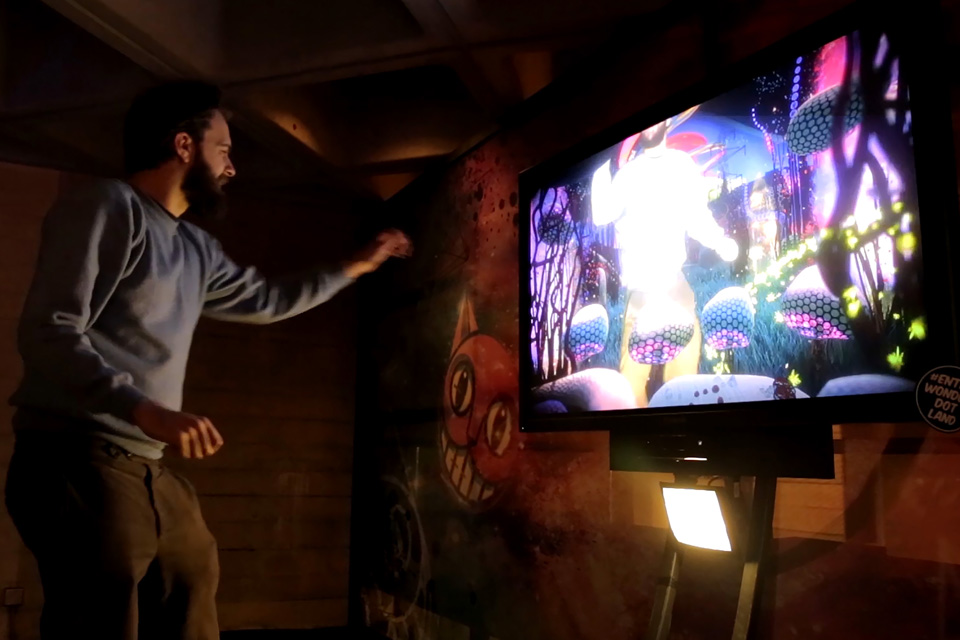
National Theatre’s Enter Wonder.land promoted the musical Alice in Wonderland
Leadership
The importance of digital leadership is singled out as a theme across a number of studies. Research by Fujitsu from 2016 found that for 71% of businesses, the success of digital projects is a gamble. The Lloyds Bank Digital Index for Small Business and Charities (2016) revealed that almost half lack all five basic digital skills (managing information, communicating, transacting, creating and problem solving) and that 4 out of 5 charities report investing no money in digital skills, even though many recognise their own skills gaps. Digital transformation initiatives are shown to fail, in any sector, when they are not led from the top of the organisation. A 2015 study found that lack of engagement and buy-in from senior leadership is a common barrier to digital transformation and the 2017 Digital Culture Survey reports that organisations experiencing minimum impact from tech changes are less likely to have senior managers who are knowledgeable about digital or who distribute responsibility for digital across their organisation.
Cultural leaders and boards set organisational strategies, and digital tools and technology should be included across these plans. If leaders understand the importance of digital, they will be able to identify where strategic digital investment and resources are needed.
Case study: Royal Historic Palaces - 5 year transformation project
In 2013, Historic Royal Palaces (HRP) undertook a 5-year digital change programme focussed around improving and modernising the customer journey and experience. What HRP realised very early is that the transformation was truly a change programme, not an IT programme. Of the 42 projects scheduled to take place, only 7 were around technology. 35 were about people, process, organisation and culture.
Crucial to this change was Board level leadership, governance and championing of digital initiatives. Where operating models need to change – where departments need to work differently or be shaped differently – where functions need streamlining or centralising – where roles are changing and skills are evolving: board level visibility and buy-in are absolutely key.
In Digital Programmes, all of these things can and do happen, because of the uniquely cross-cutting nature of digital technology and benefits. Certainly in HRP they did. The Programme was led by a Change Stream, which organised Board level sponsors for each stream, regular executive level show-and-tells, an executive-led programme board, and regular reports to Executive and Trustee Boards.
All this couldn’t make the change painless, but it did make the change happen. The results are the delivery of tangible business benefits and new ways of working across the organisation.
Data and Business Models
The Industrial Strategy’s Artificial Intelligence and Data-Driven Economy Grand Challenge commits to making the UK a global centre for artificial intelligence and data-driven innovation and supports sectors to boost their productivity through these and data analytic technologies. These commitments reflect the importance of our data economy to the UK’s growth and future prosperity.
For cultural organisations data can provide significant insights. Collecting data not only allows cultural organisations to understand their audiences better but the data collected - audience demographic data, commercial transactional data, metadata, crowdsourced data, locations-based data, and machine-generated data - can all be used to help develop business plans and organisation strategies. Data is also a powerful tool to challenge organisational assumptions. The Alan Turing Institute recognises the importance of data science and is driving forward cross disciplinary work to develop solutions data science can offer for real-world problems. Through a summer internship programme they will be encouraging PhD students to join them to analyse data and solve problems, share knowledge and build networks in an open and collaborative way.
The Government has a clear position on open data, to be open by default, and encourages businesses to take the same approach so new insights and innovative approaches can be explored, while also increasing transparency. Data should be shared in a fair, safe and equitable fashion between public and private parties, and Data Trusts, highlighted in the Industrial Strategy, can contribute to this.
Case study: Artsadmin-developing an integrated data system
Artsadmin, working with Golant Media Ventures and funded by Arts Council England, created an integrated data system that combines information on the artists, audiences, collaborators, clients, customers, and donors – as well as its projects and physical spaces. The purpose of the project was to unlock the value of knowledge held in different parts of the organisation. Specifically the project aimed to:
- Create an interconnected way of gathering and understanding the many types of data that they collect
- More effectively connect the people we reach to the activity we deliver
- Build better connections between our networks and facilitate data sharing
A surprising aspect of the project was that the scoping phase brought about significant change in the organisation. Employees reported having a better sense of what being ‘data capable and confident’ means in practice: knowing what you want out of your data, and why you’re capturing it at all.
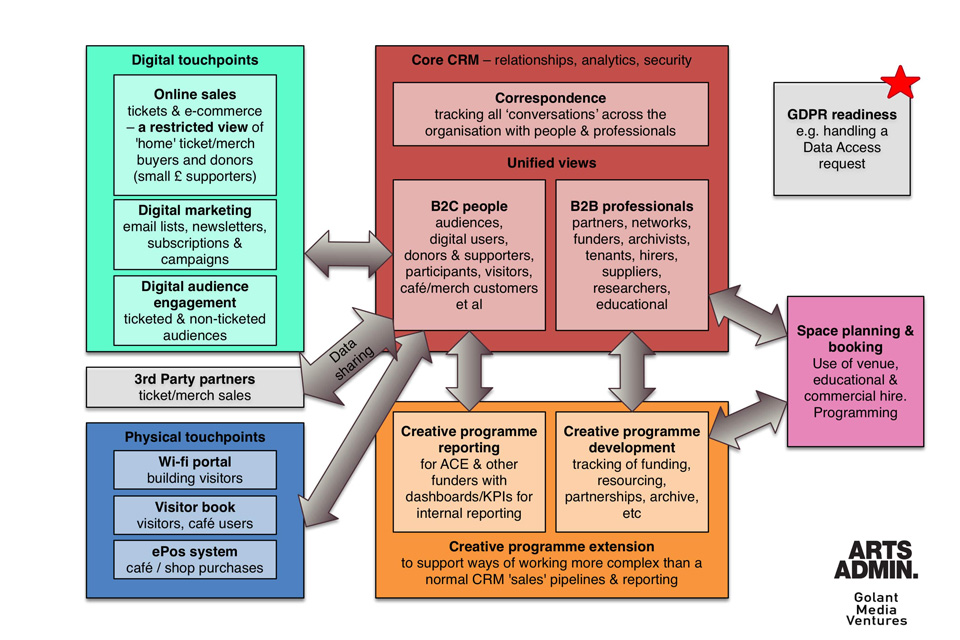
Artsadmin's Customer Relationship Management architecture diagram for its data transformation project ‘KIWI’
Using data effectively
However, cultural organisations currently lack the capability to use their data effectively. Culture Counts report that 80% of cultural organisations surveyed (UK and Australia) are ‘data shy’- the lowest classification of data-readiness and the Arts Council England and Nesta Digital Culture Survey 2017 reports that only 18% of organisations use audience data to inform the development of new services or products.
Case studies and consultation responses to this project suggest that the first important step for cultural organisations is to understand the best ways to collect data including what data is needed and for what purpose, and then learn to use that data to provide value to their organisations. There is even greater potential for the sector if organisations learn, and are willing, to share and integrate that data across the sector.
Through the Data Protection Bill, Government will ensure that our data protection laws are fit for the digital age so that those collecting data use it in a responsible way giving UK citizens confidence that their personal data is secure. DCMS will work with the cultural sector to communicate the implications of the Data Protection Bill for the data they hold and collect, and to ensure access to guidance and training created by the Information Commissioner’s Office (ICO).
Intellectual Property
The Intellectual Property Office (IPO)’s 2015-2020 strategy states that “Intellectual property is being underutilised, leading to lost opportunities” finding that “only 1 in 10 [UK firms] has provided any IP training to staff.” The Digital Culture survey tells us that only 24% of organisations feel well-served for skills relating to rights clearance, and only 26% in relation to legal advice around intellectual property rights.
In exploiting intellectual property, the wider cultural sector faces the same key challenges as the Creative Industries - lack of knowledge and legal expertise, vulnerable to losing control of their creative content. Cultural organisations often fail to realise the benefits of their digital assets, missing out on opportunities to extend audience reach and brand awareness via non-commercial distribution or not pursuing commercial exploitation. They may limit access to certain types of content or fail to exploit the revenue generating opportunities of other content.
The Space has recently examined how various cultural organisations are creating digital work and the necessary rights clearance effort involved. Their work indicates that rights clearance for cultural projects is often challenging due to the complex underlying rights involved and the lack of standardised terminology associated with publishing online. There is no method to share best practice in this area and organisations often struggle with resource to be able to identify rights holders and develop rights agreements from scratch. To respond to these challenges, The Space will consult with members from the cultural sector, rights holders, representatives from union bodies that represent professional performers and creative practitioners and the IPO to examine solutions to make rights clearances better understood and utilised by the cultural sector. One proposed step is to create a Code of Practice which would provide a template from which rights clearance procedures in the cultural sector could be more efficiently handled.
Improving understanding of Intellectual Property
The UK intellectual property system is world-class but new technology can offer a challenge to business models and is changing the ways in which IP is being commercially exploited. There is a need to maintain a balance between protection and remuneration of rights on the one hand and digital innovation and audience access on the other hand. The IPO will lead work to develop guidance and training for the cultural sector so that organisations can better understand the relevance of the Intellectual Property framework to their work.
Case study: British Library Business & Intellectual Property Centres working with cultural organisations
The British Library Business & IP Centre network (which covers public libraries in London, Birmingham, Exeter, Hull, Leeds, Liverpool, Manchester, Newcastle, Norwich, Northampton and Sheffield) provided support to hundreds of cultural and creative organisations, including theatre schools, radio broadcasters, events management and talent management agencies as well as animation and photography studios. Here are a couple of examples where these centres have assisted them.
Theatre Workout is an award-winning theatre and events company based in London’s West End. They run workshops for over 8,000 people a year, delivered by highly trained and experienced performers, artists and practitioners. In 2017 they attended the Business & IP Centre’s Innovating for Growth programme, where they received a bespoke programme of support to grow and develop their business, taking a step back to look at their branding, marketing, strategy and planning and intellectual property needs.
Kalory photography and video studio specialises in creating visual content (photo and video), so that a business can redefine their image and perception for their customers. Franck Jehanne, co-founder of Kalory, said: “The Innovating for Growth team helped us a lot by giving us the confidence to hire our first employee. The programme is also really good at forcing you to step back and analyse your business. You are often so busy that you neglect your strategy or marketing. By raising questions and discussing the business, we changed some crucial elements in our branding and commercial strategies. The group sessions were also extremely useful. We met entrepreneurs with similar issues but in other industries and that’s a great way to make you think outside the box.”
Policy commitment:
.9. In order to support the cultural sector in its understanding of Intellectual Property;
-
a. The Intellectual Property Office will work with the British Library’s Business & Intellectual Property Centres and representatives from the cultural sector to develop guidance and training so that cultural organisations can better understand the Intellectual Property framework and its relevance to them.
-
b. The Space will lead work with cultural organisations, cultural rights holders and seek guidance from the Intellectual Property Office to develop a Cultural Digital Rights Code of Practice.

Newcastle Library Intellectual Property Centre - Credit: Newcastle Library
6. Future Strategy: Unleashing the creative potential of technology
6.1 Introduction
The UK is a global leader in culture and creativity and, as we leave the European Union, we are committed to maintaining our position on the world stage, driving creative innovation, and producing talent that is recognised the world over.
Despite containing less than 1% of the world’s population, we have world leading creative industry sectors contributing £91.8 billion in GVA in 2016 with Creative Industries growing at twice the rate of the rest of the UK economy. Cultural organisations and practitioners contributed just under a third (£26.8 billion) of the GVA generated by the Creative Industries.
The GfK Anholt Nation Brands Index consistently ranks the UK as one of the world’s top five destinations for culture. The strength of the UK’s culture offering sees it project considerable soft power, ranking second on the cultural element, on the back of the global reach and influence of state institutions such as the British Council and BBC World Service.
We export £18 billion in cultural exports which are growing quickly - 16% annual growth for service exports and 27% for good exports between 2014-15 (the latest year for which statistics are available). The GREAT Britain campaign has been successful in promoting the best of the country to international audiences, and the cultural sector is a significant part of this offering. The British Council reaches more than 500 million people online each year through its extensive overseas network. This reach helped 31 million people engage with its China showcase of the best of UK arts organisation content through Dandu - one of China’s main online platforms.
World-class culture
We have world-class museums with three of our national museums in the top ten most visited museums in the world with each close to 6 million visitors in 2016. Many visitors including international visitors, flock to our historic buildings (2.7 million visited the Tower of London), monuments (1.4 million visited Stonehenge) and sites (1.1 million visited the Roman Baths in Bath).
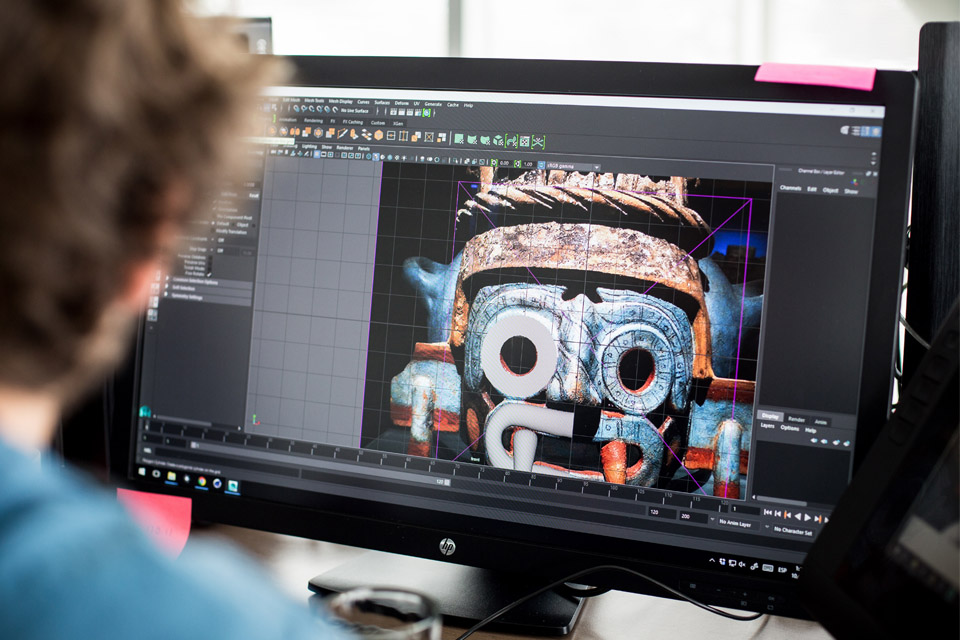
AltCity CDMX,British Council 2016 Photographer: Sandra Ciampone
London’s theatres generated record revenues in 2016 with audiences of 14.3 million. In London, 24% of international tourists visited a theatre whilst the same figure for the rest of the country was 18%. Meanwhile, UK gig and festival attendance reached 31 million in 2016 with 820,000 people coming to the UK specifically to watch live music. There are more than 200 million visits to the approximate 3,000 public libraries in England each year with the Library of Birmingham the most popular with over 1.6 million visitors in 2016/17. The Associated Board of the Royal Schools of Music (ABRSM) is the world leading provider of music exams, providing assessments for over 600,000 candidates in 93 countries every year using digital platforms to communicate with teachers, examiners and learners around the world. In the 2016/17 financial year they welcomed over 1.5 million users to the ABRSM website and attracted over 150,000 subscribers across eight social media platforms.
World-leading digital economy
We also have a world leading digital economy; the UK is 5th in the global innovation index and an ‘innovation leader’ on the 2017 Euro Innovation Scoreboard. The digital sector contributed £116.5 billion in GVA in 2016, with £32.1 billion of service sector exports and £14.8 billion of goods sector exports. The digital sector is growing faster than the average for the UK economy with digital sector GVA growing by 5.8% between 2015-16 compared to 3.5% for the whole of the UK.
The Government is delivering superfast broadband and local full fibre networks to the nation. This includes supporting investment to provide superfast broadband coverage to as many premises as possible beyond the 95% level achieved in December 2017; introducing a Universal Service Obligation so that by 2020 everyone across the UK will have a clear, enforceable right to request high speed broadband; and supporting investment to stimulate private investment in full fibre connections by 2021.
The UK is a tech savvy market, quick to take up and innovate with new technology; our capital’s tech firms raised a record £2.45 billion in 2017 and evidence shows that the UK and London particularly remain the most attractive destination in Europe for tech investors, gaining more venture capital investment in 2017 than Germany, France, Spain and Ireland combined. As the UK prepares to leave the EU, this combined strength in the digital and cultural sectors is key to the UK’s future economic prospects.
Opportunities
For creators and for cultural organisations, this era of digital activity, investment and ambition presents opportunities for the UK to lead the way in creating new art and cultural experiences with technology. Creators maximising their digital capabilities will enhance any export opportunities. The speed of current technological change is unprecedented and whole industries are being disrupted by digital innovation, including the cultural sector. Immersive and augmented reality are changing the way in which we are able to experience the world around us, offering a particular opportunity as international demand is increasing.
6.2 Digital Infrastructure for Culture
The Digital Strategy set out the Government’s aspirations to build world-class digital infrastructure, to ensure ‘that everyone, wherever they live and however they connect, can make full use of digital services and benefit from participation in the digital economy’ with commitments to become a world leader in 5G and to increase coverage of full-fibre. Our consultation and research have shown that the cultural sector currently lacks the infrastructure and the operating and funding models needed to thrive in a digital landscape.
Digitising Collections
The Culture White Paper set out the ambition to make the UK one of the world’s leading countries for digitised public collections and use of technology to enhance the online experience of users. The paper aspired for users “to enjoy a seamless experience online, and have the chance to access particular collections in depth as well as search across all collections”.
The ambition is with good reason. The richness and variety of our national museum collections are the envy of the world, captivating to audiences and scholars in every corner of the globe. Creating digitised versions of collection items is already the core work of many museums; 61% of our cultural institutions have digitised up to half of their collection. Half of those with a digitised collection have made some of it available online, whether these are being added to collections databases, for the creation of online exhibitions, or for sharing on social media. As noted in the Mendoza review of Museums, dynamic collections curation and management are what our museums exist to do; “to protect and take care of the collections they hold, and to make them accessible to the public, not just physically, but meaningfully as well.” Whether you visit the Mary Rose Museum in Portsmouth or the British Museum in London, the high quality and vast variety of our collections have the power to bring people together; support learning, assist scholarly research; provide educational resources; and promote better health and wellbeing.
The [Cultural Protection Fund]https://www.britishcouncil.org/arts/culture-development/cultural-protection-fund) (CPF) managed by the British Council, in partnership with DCMS, supports efforts to keep cultural heritage sites and objects safe, as well as the recording, conservation and restoration of cultural heritage. This has included awards to digitally document heritage sites at risk in Syria, digitise a range of written and photographic material held in archives in Sudan and an interactive 3D model of Ksar Said Palace in Tunisia.
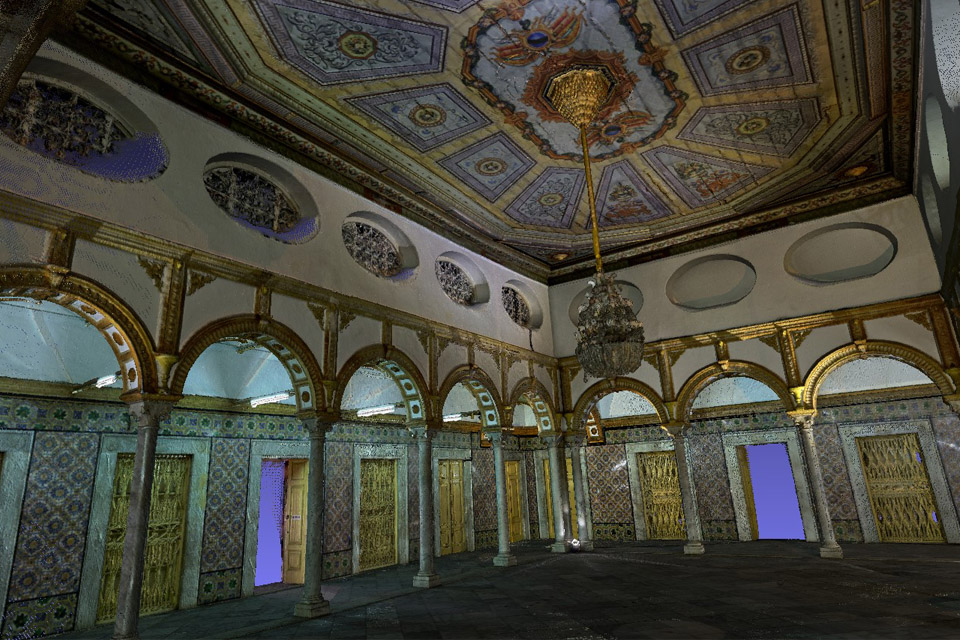
3D mapping of the Ksar Said palace © The Virtual Experience Company
Successes
Some digitised collections are attracting huge numbers of online visits from audiences, both domestic and international. The Natural History Museum’s Digitised Specimens and Records portal was visited almost 75,000 times in 2017, with 713 million records downloaded between 1 January 2017 and 31 December 2017. They also report significant international reach with 54% of views coming from outside of the UK. The British Library has now grown its digital library system to host over 120,000 e-books and over 2 million e-journal articles.
The Welsh Government awarded a grant to The National Library of Wales (NLW) to develop a National Digital Library Service in partnership with other Welsh libraries, launched in March 2016. The partnership provides people across Wales with free access to a wide range of online content including family history resources, newspapers and general reference material. The partnership also provides free online remote access to e-books, e-magazines and e-audio books.
There are also sites pulling together or aggregating content from across collections. Google Arts and Culture partners with cultural institutions using free tools and technology to draw together millions of artworks, historical sites and stories onto one site. ArtUK holds over 200,000 artworks from over 3,000 organisations, most of which are not physically accessible to the public and since its launch in February 2016, the site has had more than 2.5 million unique users with over 50% from overseas, again demonstrating the potential for international reach.
Online curation can unlock access to cultural experiences and audience reach otherwise unimaginable and using social media to showcase digitised material can raise the profile of items, exhibitions and collections.

3D Sunflowers - National Gallery
Over three days in Summer 2017 a National Gallery-led initiative saw almost 13 million people globally experience #sunflowers live Vincent Van Gogh’s Sunflower paintings through VR and Facebook Lives. A virtual reality exhibition brought together five of Vincent’s sunflower paintings, sourced from five institutions across the world with a narration by Willem van Gogh, the great-grandson of Theo van Gogh (Vincent’s brother), as its unseen guide. The Manchester Plinth AR project was the first of its kind in the UK, presenting art through augmented reality in public spaces. It brings artefacts out of the gallery and into the city meaning they’re accessible for everybody to experience and enjoy.
Case Study: The People’s Collection Wales- a digital heritage programme
People’s Collection Wales is a bilingual, digital platform complemented by a wider programme of activities, allowing users to discover, share and contribute to an online collection of Welsh heritage ensuring the rich history of Wales is celebrated and preserved. The programme is funded by the Welsh Government and delivered by a federated partnership of three national cultural and heritage bodies. Organisations, community groups and individuals are encouraged to upload photographs, recordings and documents that hold stories about Wales. To date over 100,000 items have been added to the collection.
The programme also offers a number of training services and support for groups and individuals interested in digitising Welsh Heritage and its website has a section specifically tailored to provide resources for teachers.

Demonstration of ‘The People’s Collection Wales’ website © Crown Copyright: Royal Commission on the Ancient and Historical Monuments of Wales
Case Study: Archiving the Hull City of Culture 2017
Hull was UK City of Culture 2017, and Hull University Archives have worked to capture this incredible year while it was happening. No UK city had undertaken the creation of a born-digital archive of this scale before; to build a truly complete picture, the team had to be involved right from the start – after the event would have been too late.
The Archive will be a centrally collated record of activity from before, during and after 2017, showing the whole life cycle of the City of Culture. An estimated 100,000 digital records - including photographs, films, minutes, sound recordings, scripts, planning documents and contracts - will document the development process, the performances, and the experience of people of Hull who engaged with events. The majority of records are from The Culture Company, (who were formed to deliver the year’s activities) alongside artist and participant depositors including the University of Hull and the BBC.
The City of Culture Archive will be crucial for its evidential and research value and will be part of the collective memory of the city. Archives underpin other parts of the cultural sector; as part of the legacy programme the archive will be used by artists and students to inspire new creative work. It will benefit future projects too, as the team are creating a toolkit that documents best practice and addresses the digital challenges surrounding the archiving of large cultural events as they happen.
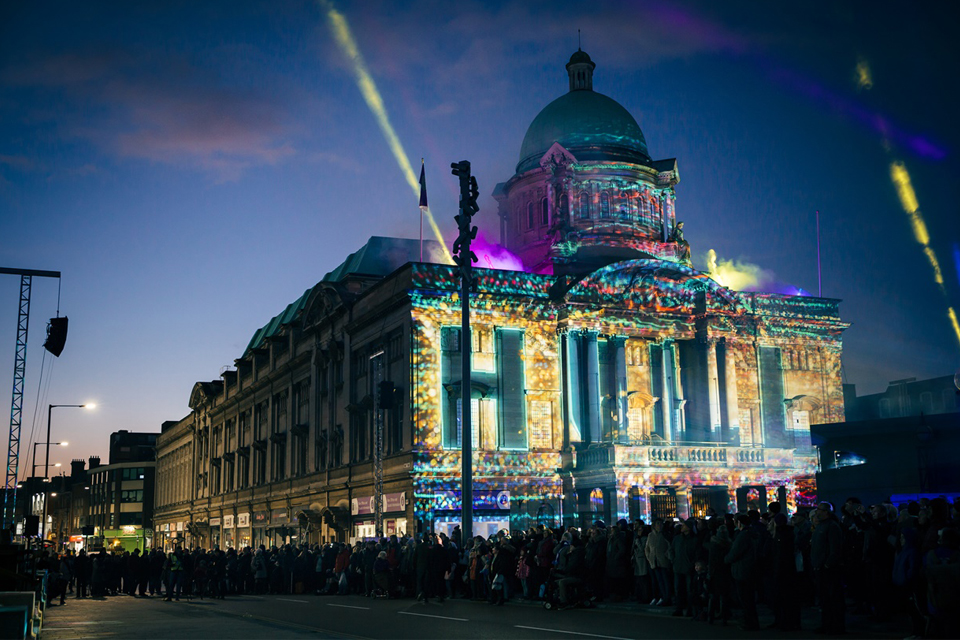
We Are Hull by Zsolt Balogh, Hull City of Culture
In creating the digital record of our cultural assets organisations, some of the best examples consider how the digital asset will fit with the physical one and how this can help to increase the audience’s understanding and engagement. A good demonstration of this is the Smartify app, developed by a UK-based company, which allows users to scan and identify artworks providing information about them and allowing users to build their own personal gallery. Not only has the company already partnered with a number of UK-based galleries including The National Gallery, The Royal Academy of Arts and the Middlesbrough Institute of Modern Art, but it is spreading its reach internationally being used in locations in the Netherlands, France, America and Russia to name a few.
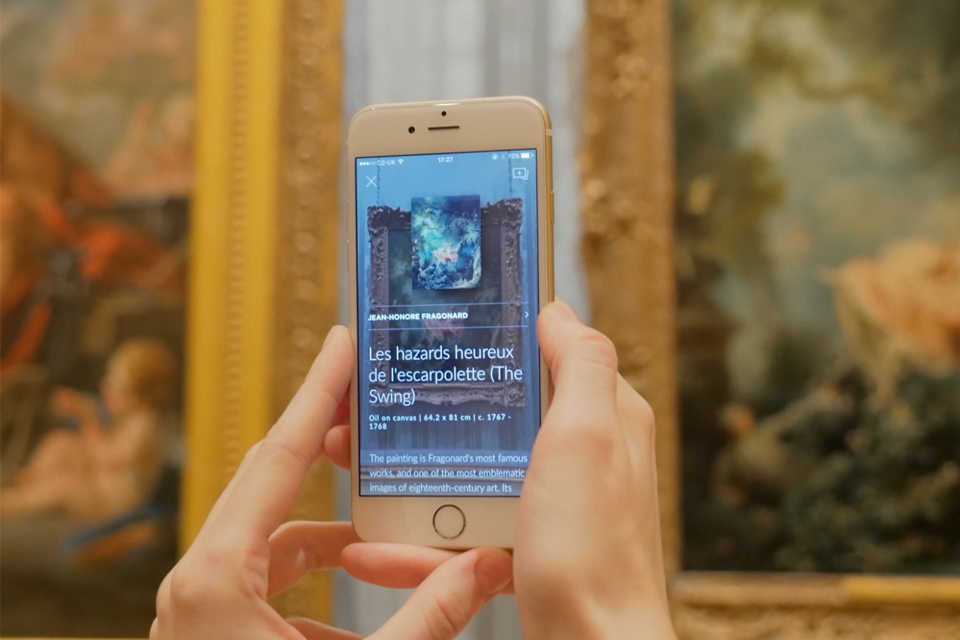
Smartify user scanning Jean-Honoré Fragonard’s Les hazards heureux de l’escarpolette (The Swing), c. 1767-1768 at The Wallace Collection, London, 2017. © Smartify
Challenges
Despite the audience and scholarly appeal of some digitised collections, our consultation highlighted difficulties. Projects can be expensive and require specialist equipment, expertise, time and resource and are delivered with varying degrees of success. Public funding to digitise collections has historically been largely responsive to calls from individual organisations with little cross sector strategy and no alignment to ensure that digitised cultural content across projects and collections can be easily connected. Digitised collections are often difficult to discover when searching online due to poor quality metadata, with search engines not revealing links to individual collection items on the institutions’ websites, and audiences instead being directed to poor quality images with little or no detailed curation.
Differences in data standards and openness mean that it is difficult to curate across collections and create new online exhibitions or content for audiences and limiting the educational value of the digitised asset. Unless images are tagged in a certain way, content aggregators will not be able to gather the image when searched. This has implications for modern audiences who expect digital content to be easy to navigate and to be open for them to enjoy, contribute, participate and share.
A strategic approach to digitisation
Existing public funding spent on digitising collections, could be more strategic and co-ordinated. This would help improve the impact of projects with a focus on preservation, curation and public access at the forefront of their design.
The National Archives have a well-developed digital strategy that embeds digital across the whole organisation and also supports a wider ‘archive ecology’. Building on their strong leadership and experience, the National Archives will convene a taskforce to address the barriers to the strategic digitisation of collections. The group will have a specific remit to devise the common standards to make our assets more interoperable and discoverable. Within this work they will a consider a content strategy, addressing sustainability, and the possible economic models available to fund digitisation. They will consider how to develop standards which will enable collections to be used in immersive tech projects.
Case study: The National Archives- developing an archive ecology
As the leader for the whole of the archives sector in England, The National Archives works within an “archive ecology” made up of collections spanning all sizes, eras and format, including many digital archives. The National Archives has a strategy that embeds digital across the whole organisation and supports their ambition to be “a digital archive by instinct and design”, and they are supporting the archive ecology in digital development too.
The National Archives serves as a kind of aggregator of UK collections, and this deep collections knowledge is now available to researchers online all over the world via its Discovery system. Archives can now add their own collections metadata directly into it, affording The National Archives an opportunity to focus on improving data quality and building data and digital literacy across the archival sector. This is also a content ecology in which open data sits easily alongside commercial partnerships and licensing and where experimenting and researching new ways of packaging and exploring content are possible.
This vision of content aggregation is analogous to the way other sectors have recognised the value of taking a collaborative, strategic approach to digital infrastructure - often referred to as a digital ecosystem. The travel industry, through sites like Skyscanner, allows users to search multiple competitor databases to provide precise information based on when and where we wish to travel. NewsNow aggregates news feeds and allows you to filter and set preferences based on your hot topics, from football teams to lifestyles. Amazon now offers a doorway to thousands of tiny online retailers, offering them a platform to sell to a global audience. The cultural sector can learn from these kinds of user experiences to break down barriers between collections of digital cultural content.
Policy commitment:
.10. The National Archives will work with culture sector representatives to develop a new strategic approach to the digitisation and presentation of cultural objects, for example, looking at the common standards needed to make our nation’s great cultural assets more interoperable, discoverable and sustainable.
Live to Digital
The digital transmission of live performances to locations a long way from the theatre or ‘Live to Digital’ is a relatively recent development but has expanded in volume and range over the last decade. Research suggests that audiences see ‘Live to Digital’ as a distinct experience with little evidence of any cannibalisation of live audiences, and something that can act as a ‘halo effect’ increasing interest in live events. It is also an expanding market, with MTM reporting in 2015 that 90% of arts organisations have produced some form of live-to-digital production.
The UK is host to significant activity in the Live to Digital arena; driving both audience engagement and commercial revenue streams. Live to Digital can reach into ‘closed communities’ including community centres and care homes, and through live streaming platforms reach harder to reach audiences
Event Cinema - the live broadcasting of cultural events (for example ballet and comedy) in cinema - currently accounts for between 1% - 3% of global box office receipts and has seen huge commercial successes with Billy Elliot Live and a 50th anniversary episode of Doctor Who which broke records. The Space undertook 28 performance capture commissions across 2016 and 2017. This included London 1666, a 120 meter long, 10 meter high replica of the City of London set ablaze on the River Thames, which reached an online audience of 3.8 million.
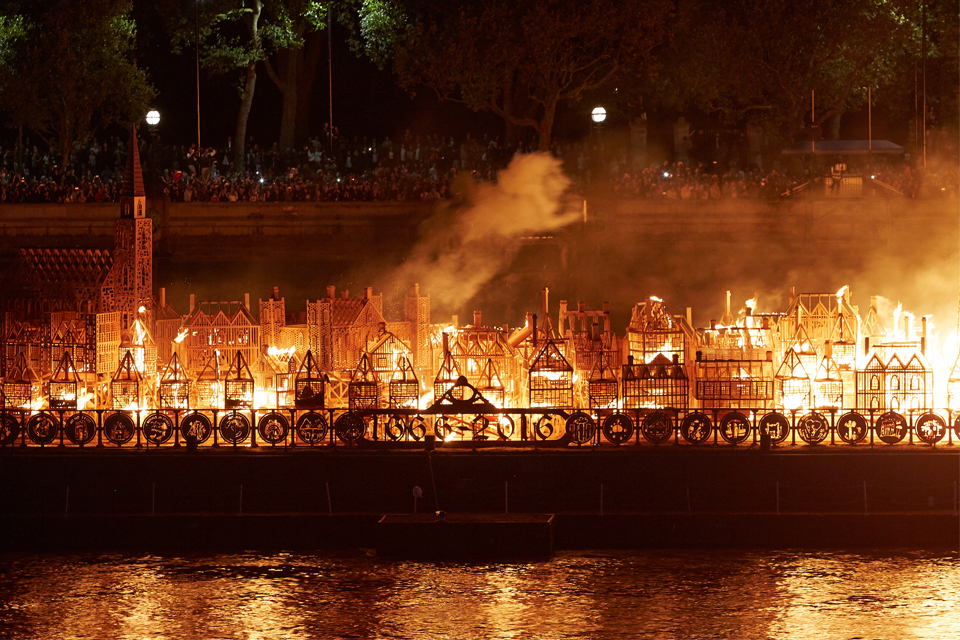
London 1666, David Best, London’s Burning, a festival of arts and ideas for Great Fire 350. Produced by Artichoke. Photo by Matthew Andrews
The British Library, National Library of Scotland and the National Library of Wales have partnered with 22 major libraries across the UK to form a ‘Living Knowledge Network’ which amongst other activities, live-screens world class talks and debates held within an individual library across its network. For example, Michael Palin in Conversation with Joan Bakewell was streamed in 6 libraries and watched by over 170 people, whilst Women, Witches and Witch trials was screened in 11 libraries and attracted over 240 attendees.
Riverside Studios is currently in the final year of a redevelopment to create a 90,000 sq ft space, with the aspiration to turn itself into a national centre of excellence and innovation in the live-to-digital arts arena. At the heart of Riverside’s vision is a partnership-led model, that allows arts organisations, universities, community groups and technology companies to explore new ways of making and sharing content.
Challenges, however, remain. Significantly, the cost of making online content of sufficient quality to satisfy audience expectations remains prohibitive to many, despite the cost of equipment falling significantly, a point that was made in our stakeholder consultations.
To help develop the sector further, Arts Council England will bring together a group of organisations working on Live to Digital projects. This will ensure that those working in this area become more aware of each other’s activities and help encourage collaborations to develop. The group will also help develop a shared understanding of what is required for Live to Digital to flourish.
6.3 Innovation
The UK’s Industrial Strategy set out a clear ambition to be the world’s most innovative economy, building on the UK’s great historic strengths in developing and deploying new ideas. It includes commitments to raise total R&D investment to 2.4% by 2027, increasing the rate of R&D tax credit to 12%, and investing £725 million in New Industrial Strategy Fund programmes to capture the value of innovation.
Creating with new technology allows artists to push the boundaries of what’s possible and create transformative experiences for audiences, for technology to inspire cultural production, and for creative content to test the applications of technology.
Case Studies: Cutting edge innovation and culture
FuturePlay played the Edinburgh Fringe Festival both in 2016 and 2017, and celebrates, explores and showcases cutting-edge creative content and ideas at the intersection of art and technology. The 2017 event featured a Virtual Reality Studio, a gaming and interactive Tech Zone, and an Immersive Art Gallery powered by Google Tilt Brush. The 2017 event attracted 5,000 visitors across 24 days.
Google Arts and Culture and the Natural History Museum have partnered together to bring the Rhomaleosaurus, a pre-historic sea dragon to life using a 360 degree virtual reality experience, and gives an account of how this animal would have lived. You can view this on YouTube
Home in Manchester staged Paul Auster’s City of Glass featuring a VR experience in the auditorium designed to immerse the audience still further in the noir detective thriller.
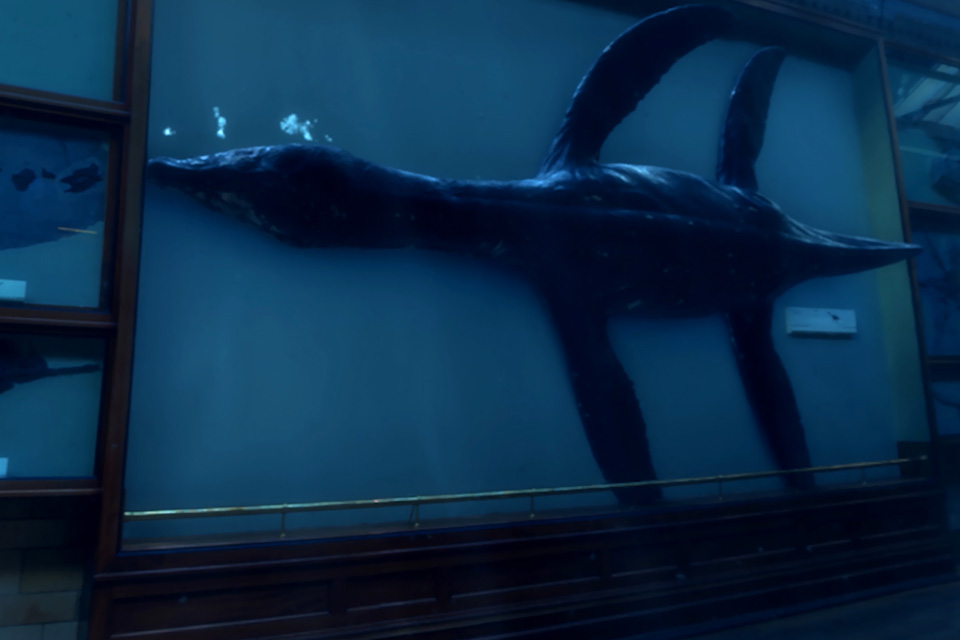
Natural History Museum’s virtual reality colossal Rhomaleosaurus
Tech and content development in step
A recent review by the BBC of its R&D activity highlighted the importance of the relationship between media technology and content. This blended approach to content and tech development within the BBC enabled the development of Piero, the sports analysis software invented by the BBC, which enables sports commentators to dissect and describe action by augmenting the live video with graphical overlays. Similarly, the BBC’s recent interactive drama the Inspection Chamber, in which the listener plays the fourth character in a radio play using technology such as Amazon’s Alexa, was a creative and technical response to the opportunities presented by the emerging ability to talk to machines.
The UK’s Offer
We have fantastic talent in the UK for creating with technology nurtured by our world beating Higher Education Institutions such as Glasgow School of Art, University of the Arts London, and Goldsmiths University. Our universities provide training in creative tech, with students engaged in highly creative, applied and problem-based learning involving a wide range of technologies.
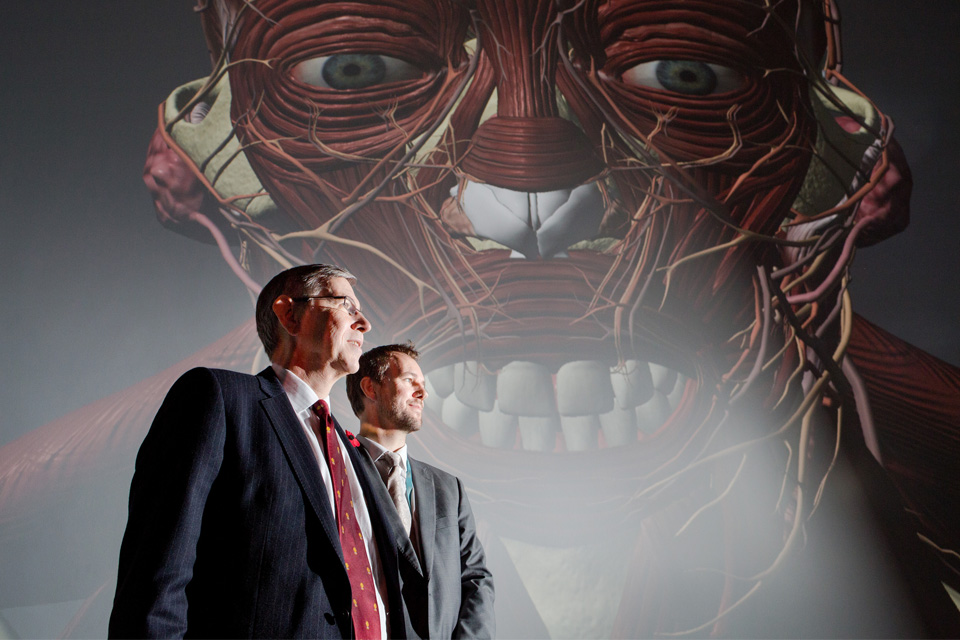
Glasgow School of Simulation and Visualisation
We also have creative spaces which exist to allow creators to learn new digital skills and work with new technology. For example Near Now in Nottingham has been supporting artists to experiment with virtual reality in a Virtual Reality Residences programme. The National Theatre has launched The Immersive Storytelling Studio to create a generation of digital storytellers. Digital Catapult Centres in the North East and Tees Valley, Yorkshire, Northern Ireland, Sussex and London are accelerating the earlier adoption of advanced digital technologies by the creative industries and Somerset House Studios provides space for a community of artists working with technology. At the community level, the growing number of Makerspaces in public libraries provides access, skills, equipment and a network of support which helps people turn their creative ideas and inspirations into small enterprises.
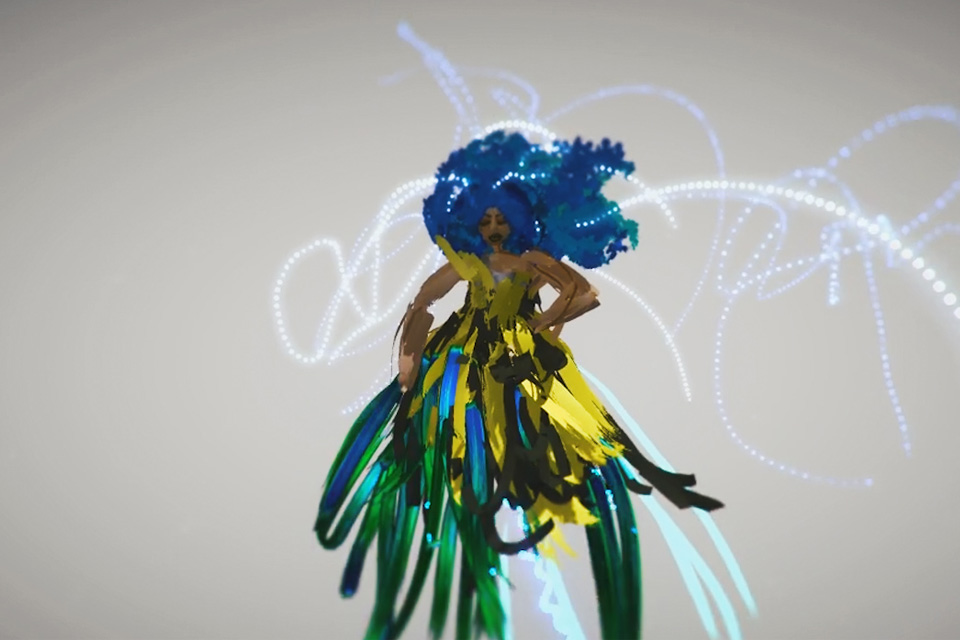
An early example of one of the first VR sketches local artist Honey Williams (aka THEHONEYEFFECT) made using Tilt Brush by Google. Residences Programme Near Now
There are a number of developing funding streams for immersive culture projects. CreativeXR, a programme developed by Digital Catapult and Arts Council England, provided seed funding to 20 creative and technical collaborations to develop concepts and prototypes of immersive (virtual and augmented reality) content. The BFI’s Film Fund was reformed in Autumn 2017 to remove running length and theatrical requirement restrictions and to embrace interactive and immersive projects. The Arts and Humanities Research Council and the Engineering and Physical Sciences Research Council are funding 32 research projects around the themes of Memory, Place and Performance exploring the future of immersive experiences. The projects will bring creative and technology researchers and businesses together to develop concepts and prototypes suitable for further funding.
State of R&D in the Cultural Sector
Creative industries, including the cultural sector, invest substantially in R&D. Analysis from the Enterprise Research Centre for Nesta suggests that the creative industries are as likely as manufacturing firms to conduct in-house and external R&D and be more likely than services firms to do so.
However, the creative industries sector faces particular barriers to R&D including: fragmentation - SMEs and micro-businesses (of which there are many in the cultural and creative sectors) are sometimes less well placed to bid for, and manage, large-scale funding awards that could propel growth and build networks of expertise; the ideas rich, IP heavy nature of creative business assets which are not always recognised as collateral; and cultural factors - where creative research and its application has sometimes been seen as separate to hard industrial research, even though it often involves many of the same technologies.
Additional issues raised during our stakeholder engagement included R&D not being something that cultural organisations are generally able to self finance and investment in cultural projects tending to be awarded to time limited projects leaving little space for the experimentation needed when working with new technologies. Running parallel to this funding challenge is often a fear of risk taking and failure within our cultural organisations, particularly within our larger, long established institutions and organisations.
Recognising the problem, in 2012-15, Arts Council England, Nesta and the Arts and Humanities Research Council ran a Digital R&D Fund for the Arts, investing £7 million to support collaboration between arts organisations, technology providers, and researchers. The fund tested the impacts of a dedicated R&D funding stream for arts and culture and delivered significant positive impact for participating arts and cultural organisations particularly in terms of testing approaches towards audience development. Critically, an evaluation confirmed that the projects would not have taken place without the Fund.
Case Study: Impact of the Digital R&D Fund
Riot 1831 @ Nottingham Castle is an augmented reality exhibition presenting accounts of real people who witnessed or were involved in the attack on Nottingham Castle during 1831. Research during the project found the AR element significantly helped audiences to engage with the events; 79% felt the stories helped them understand the history better and 85% agreed the interactive elements helped them remember the experience. An evaluation found the project made Nottingham City Museums & Galleries less risk averse, and now carry out external research on what other organisations are doing in their exhibitions to inform their own exhibitions. The project was also the catalyst for the organisation to develop a digital media strategy, and at a practical level led to senior staff using technology much more to present ideas.
The National Holocaust Centre and Museum (NHC) worked with a technology and research partner, to develop the Forever Project which aims to preserve the live experience of interacting with a Holocaust survivor for future generations. The funding supported software research and development that creates the illusion of interacting directly in real time with a holocaust survivor (through a combination of virtual reality and real-time speak recognition technologies). For NHC this represented a first technological project. The project also produced a ‘how to guide’ to help other arts organisations ‘immortialise’ any person containing information about methods, costs and resources.
Remedies
A number of approaches and measures, including through the Industrial Strategy, are addressing the issues restricting innovation in the sector.
Some cultural organisations are tackling the low tolerance to risk by embracing staged development models, where funding is released in stages so that tech projects can be assessed, and altered, as they develop. Examples include the Space’s ‘amber light’ staged development process.

The Forever Project, The National Holocaust Centre
Case Study: The Space and Yorkshire Sculpture Park’s project Sculpture.com
Yorkshire Sculpture Park (YSP) wanted help to enhance the on-site experiences for visitors of the park and grow their online presence with potential visitors. The development process gave YSP the opportunity to work closely with the Space on a detailed scoping process and develop a digital project brief based on how their visitors were already using platforms and technologies in the park (i.e. mobile phones, photography, Instagram and physical object based interaction).
YSP are now working with a leading interactive studio (Studio Moniker) to develop a 3D web application that helps visitors find their way around the park, whilst interacting and engaging with key artworks. This is helping YSP take great steps towards creating more innovative digital work with audience engagement at the heart of its development. Sculpture.com is now in testing on site, and will have a full roll out for the Easter holidays 2018.
To increase innovation within the sector, Arts Council England and the Heritage Lottery Fund will ensure that digital projects - including immersive cultural content - are fundable through existing funding streams. They will also encourage the sector to use a staged development approach to the development of innovative digital cultural content.
The Government is supporting R&D in the sector by investing £39 million, from the Industrial Strategy Challenge Fund, in the Arts and Humanities Research Council’s Creative Industries Cluster Programme. The Programme’s objectives are to deliver partnerships or clusters between universities and creative businesses across the country, to address a distinct and measurable challenge for each of the clusters. The Programme will leverage additional funding from the university and private sector that will take the total investment to around £80m, also enabling the creation of a National Creative Industries Policy and Evidence Centre.
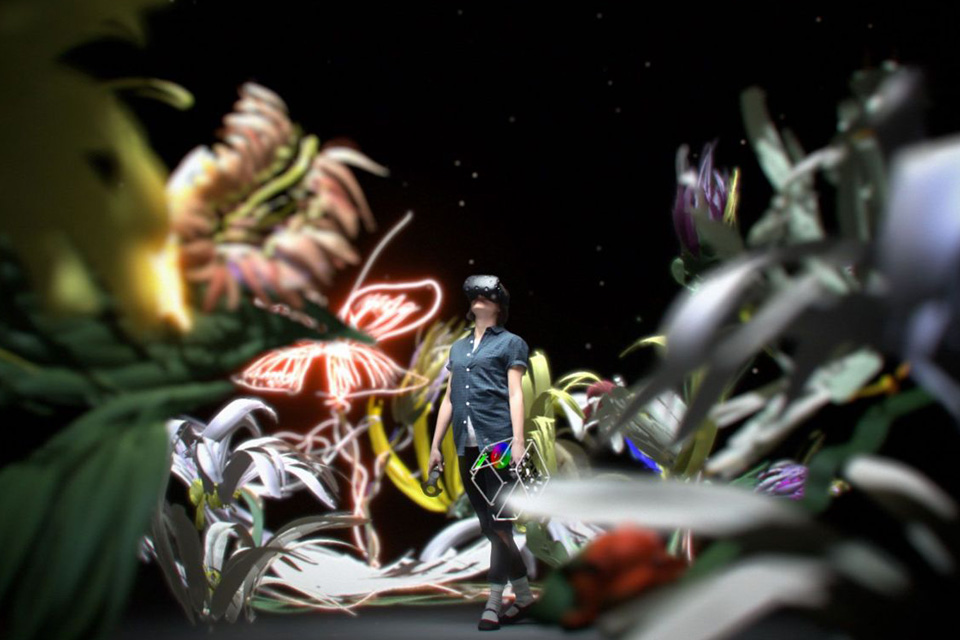
Virtually Real, Royal Academy of Arts
As part of the Industrial Strategy, this Government has also committed up to £33 million worth of funding through the Industrial Strategy Challenge Fund’s Audience of the Future programme into pioneering immersive technologies and experiences like virtual reality and augmented reality.
This investment will establish a programme of industry-led activities including public demonstrators, collaborative R&D, and a new Industry Centre of Excellence, bringing creatives, researchers and technologists together to create new and exciting immersive-content. Government encourages cultural organisations to lead the way in engaging with these funding opportunities, using their unique position as the nexus between creativity and technology to produce innovative new content.
Government, also through the Industrial Strategy, is investing £176 million to support 5G development. This money is open to cultural organisations with Watershed in Bristol, a leading film culture and digital media centre in the South West, part of the 5G trial. On the weekend of 17 and 18 March 2018, Watershed, Smart Internet Lab at the University of Bristol and We The Curious will host the Layered Realities Weekend 5G showcase launching the world’s first public 5G testbed, with Bristol audiences invited to experience the potential of 5G at a series of free experimental public events.
New experimental spaces
To provide greater opportunities for cultural organisations to experiment, the National Gallery is working with data partners like Nesta to create an Innovation Lab. The lab will support the gallery’s own programmes and help with its long term strategic decision making, as well as providing a valuable resource for the museum sector and wider cultural sector. It will focus on three areas:- Using advanced technology to enhance the visitor experience; developing partnership models between arts, digital and academic institutions in support of London’s creative cluster; and a digital project incubator to help develop the digital capability of institutions in the museum sector.
The Royal Opera House will set up a space for experimentation to develop new skill sets and innovative content on emerging tech platforms. A new department – the Audience Labs – will focus on experimenting with immersive technology to open up new experiences for audiences. With opera and ballet traditionally bringing together all art forms, from music to fashion, to design, creative technologists and beyond, the Royal Opera House is well placed to develop collaborations across the cultural and technology sectors.
The Royal Shakespeare Company, BBC and Arts and Humanities Research Council, who are recognised as sector leaders in creative tech projects, will help mitigate resourcing issues for the sector by sharing technical assets, capacity building and innovation support to help the upskilling of UK cultural organisations of all sizes.
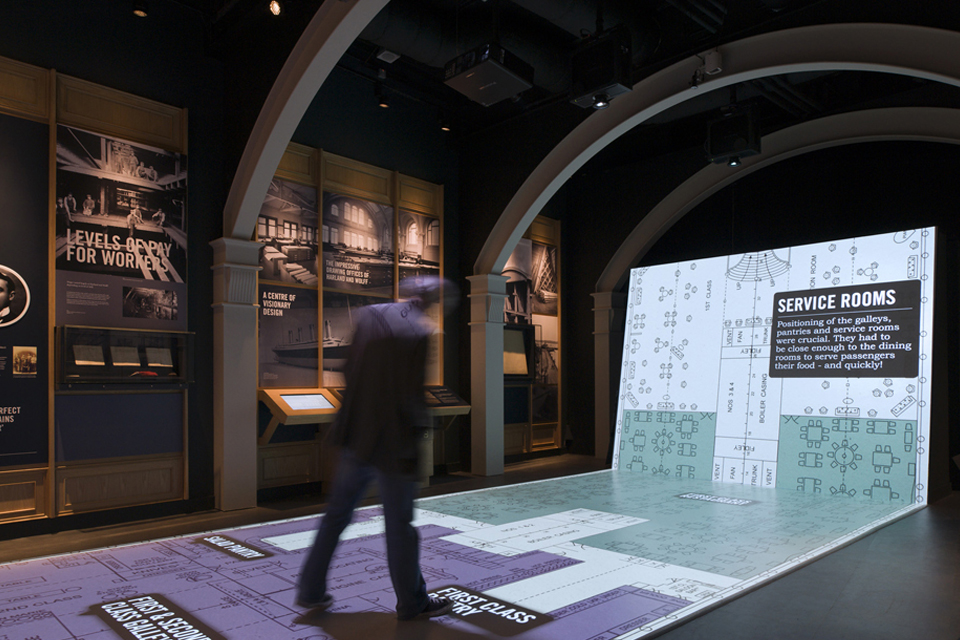
Immersive Drawing Board, Titanic Belfast Experience
Policy commitment:
.11. The National Gallery and the Royal Opera House will open up new opportunities for the culture sector to experiment with new technology and cultural content:
-
a. The National Gallery, working with data partners like Nesta, will create an Innovation Lab so that cultural organisations, and in particular museums, are able to make best use of advanced digital technologies in enhancing visitor experience and creating content, and can develop best practice in collaborating with the technology and academic sectors.
-
b. The Royal Opera House will create an Audience Lab to work with diverse talent, developing new skill sets to create innovative content using emerging technologies. The Audience Lab will strive to develop cross-sector collaborations to open up new experiences for audiences.
.12. The Royal Shakespeare Company, the BBC and the Arts and Humanities Research Council will share selected R&D prototypes and technical assets and will offer related capacity building and innovation support to cultural partners of all sizes across the UK. This commitment is aimed at mitigating resource issues, reducing duplication and encouraging innovation through collaboration.
6.4 Collaboration and Partnerships
As digital technology advances, the cultural sector is adapting and evolving to embrace new ways of thinking, working and creating, including partnering with technology companies. Cultural organisations have a strong history of collaboration and successful partnership working: museums and galleries across the country share and loan collections; heritage organisations come together to save properties at risk; co-productions occur in theatres, and archives partner in pursuit of joint research aims.
The benefits of collaborations are multifaceted, including increased capacity, sharing skills and knowledge, increasing access to collections, reaching new audiences and accessing cutting edge research and new knowledge.
Case Study: BBC Civilisations - Creating Digital Opportunities
The BBC’s Civilisations Festival in Spring 2018 sees the BBC partnering with museums, galleries and libraries of all sizes from across the UK around the BBC’s series Civilisations which tells the story of human civilisation through art from prehistory to the present. This nine-part series is a re-imagination of Kenneth Clark’s landmark 1960’s series ‘Civilisation’ and explores themes like creation, the human body and colour.
The BBC is offering organisations access to a suite of exclusive digital tools and a wealth of R&D expertise to help guide them in creating innovative digital content that will complement the programme. The experiences they make will be trialled on BBC Taster, the BBC’s public-facing platform for experiments. Museums are also being asked to contribute content for a new augmented reality (AR) app.
There are increasing opportunities for the cultural and technology sectors to collaborate and experiment. These partnerships are increasingly happening, from large technology companies to tech start-ups. However, we want to see more, especially among mid and micro sized cultural organisations.
Case Study: Cutting edge partnership between culture and technology
The Scottish Ten is a collaboration between Historic Environment Scotland and The Glasgow School of Art’s School of Simulation and Visualisation, using cutting-edge digital technologies to create exceptionally accurate digital models of Scotland’s five World Heritage Sites and five overseas international sites.
The accuracy of the digital models means they can be used to monitor damage, informing conservation and management strategies. The scan data can also be used to create models or animations to enhance public access and understanding, and to digitally reconstruct how monuments would have appeared at different periods in time.
The project positions Scotland as a world leader in documentation and visualisation of the historic environment.
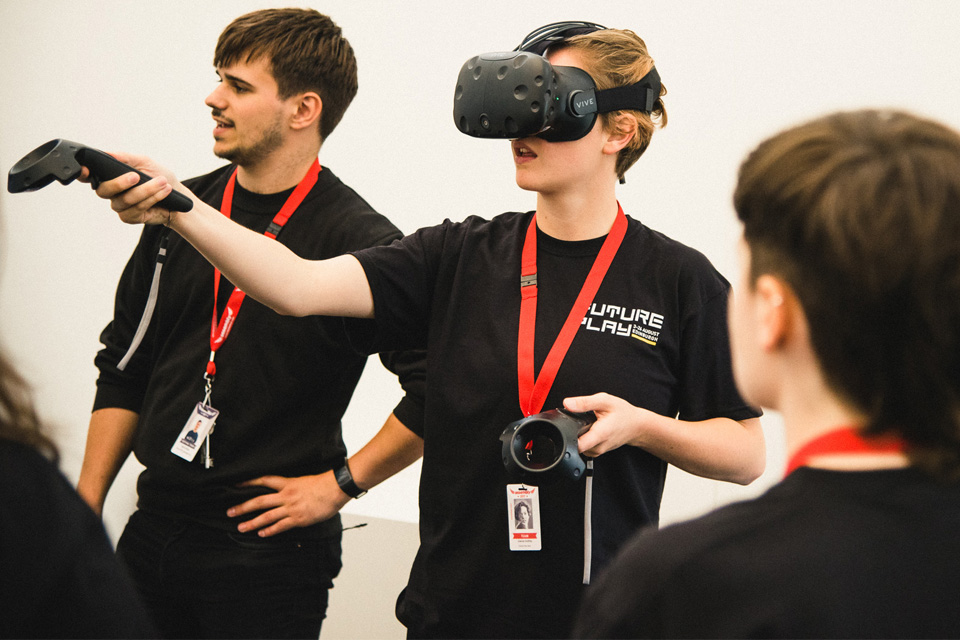
FuturePlay celebrates, explores and showcases cutting-edge creative content and ideas at the intersection of art and technology, Edinburgh Fringe Festival
Barriers
However, our consultation raised a number of barriers to partnerships and collaboration between cultural and technology businesses:
- A lack of shared language and understanding of each other’s industries;
- A lack of technical skills and knowledge which could undermine a cultural organisation’s standing with the tech sector;
- An imbalance of funding and skills between culture and tech organisations leading to an imbalance of control in the relationship and
- A lack of understanding of intellectual property and tech business models from the cultural organisation side.
However, effective partnerships present an opportunity for both sectors. For cultural organisations, these relationships can offer access to digital talent, space, equipment and resources, funding, peer to peer learning opportunities and exposure to new ways of working. Tech companies benefit from access to creative minds and creative content, and by working on innovative creative projects can explore the limits of their technologies capabilities far more than conventional consumer testing would allow. Through the Digital Culture Network, Arts Council England will provide a framework for cultural and tech organisations to drive partnership working.
7. Our Approach
Born out of the Culture White Paper, the Digital Culture Project was launched in April 2017 to explore how culture and technology can work together to drive audience engagement, unleash the creative potential of technology and boost the capability of cultural organisations. By focusing on the synergies between the culture and tech sectors - where the UK has dual competitive advantage - this project aims to further drive our cultural sector’s global status and the engagement and well being of audiences.
In developing the Digital Culture Project, we have focused on three core themes:
- Audiences: audience engagement and interaction with culture through digital platforms and distribution channels;
- Skills: the digital skills and capability that cultural organisations need to deliver their cultural offering and operations.
- Content: covering both the digitisation of existing content and collections and the creation of ‘born digital’ content where digital technology is used to create new art and cultural experiences;
The Digital Culture project team was supported by five industry experts who brought their knowledge and expertise to the project, providing narrative and evidence on specific workstreams.
Our five secondees
- Will Saunders, independent consultant (ex BBC Creative Director) - leading on audience access and participation
- Tonya Nelson, Head of Collections and Museums, UCL - leading on skills, IP and Business models
- Jane Finnis, CEO of Culture24 - leading on the digitisation of collections and archives
- Lucy Sollitt, Creative Media Relationships Manager, Arts Council England - leading on cultural content and technology
- Prof Simeon Yates, Director of Centre for Digital Humanities and Social Science, University of Liverpool -, leading on evidence and research
The project team carried out extensive stakeholder consultation, including discussions with more than 150 organisations from across the cultural sector, from major national institutions to local arts charities, as well as large digital companies and tech start ups. Engagement was through bilateral discussions, ministerial roundtables, a horizon scanning event and an online consultation platform where over 300 stakeholders gave us their views, providing detailed evidence and case studies to inform our thinking.
Thanks go to all those individuals and organisations who contributed to this project, sharing both their time and knowledge. The valuable insights provided have helped to shape the narrative and policy commitments in this document.
